
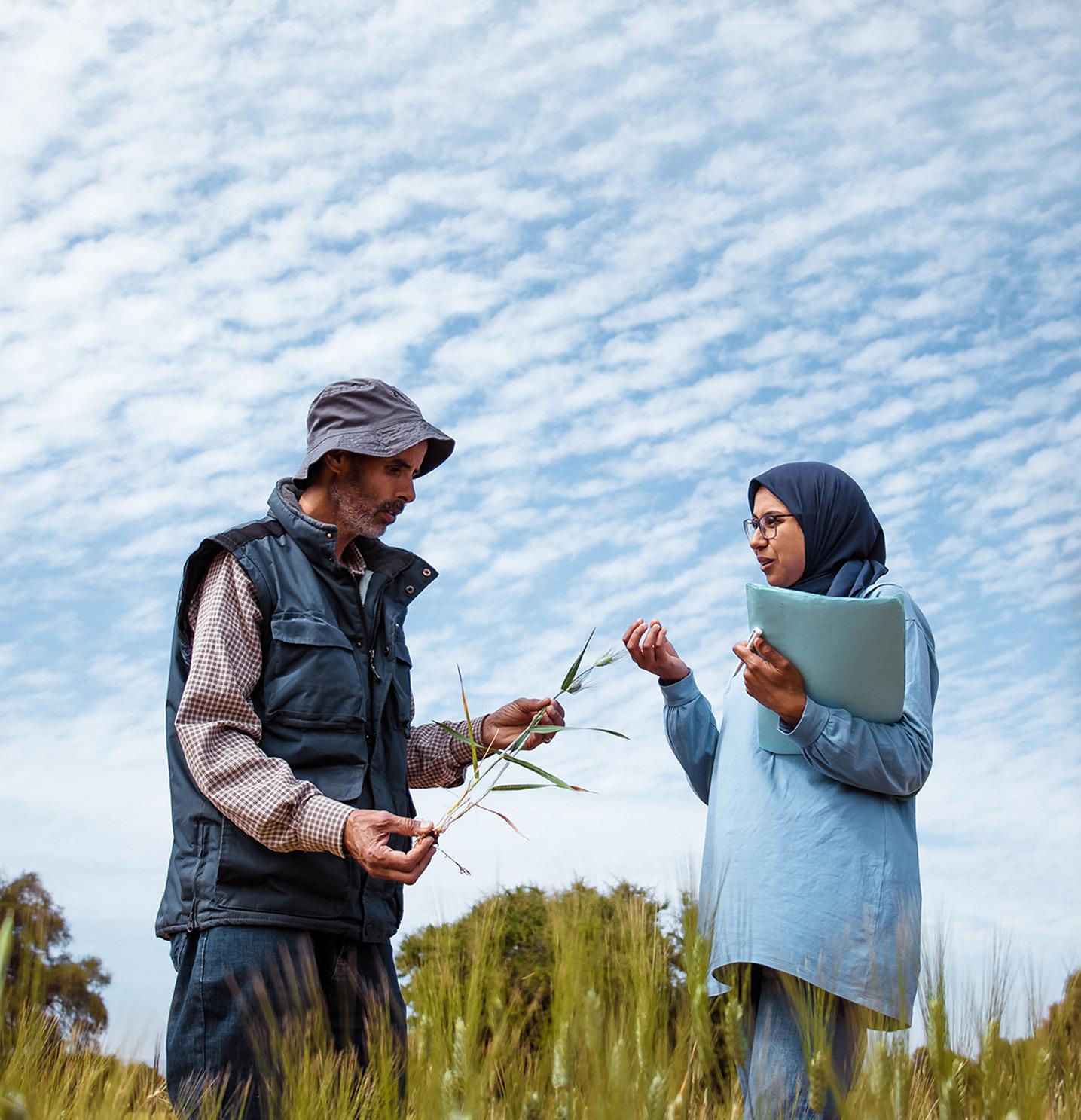
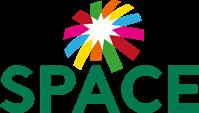





















€1,065 from

Portals & drive technology
... dust and dirt resistant
... lubrication-free
... maintenance-free
... automation starting from €1,065
Energy chains & cables
... long running
... UV-resistant

... with a 4-year guarantee*



Rollers, ball bearings & gears
... corrosion-free
... lubrication-free
... PTFE-free and PFAS-tested
igus® motion plastics® are innovative components for motion that require no lubrication or maintenance. They include solutions such as ball bearings, energy chains, and gantry systems. In vertical farming applications – for instance, in roller tables or automated rack handling – they offer reliable performance thanks to their high resistance to dust and dirt, excellent corrosion protection, and exceptional durability.
*www.igus.eu/guarantee




Growinnovate designs, manufactures, and distributes our market leading GrowinBag™. Discover the innovative design that enhance plant health from the roots up, with a durable, environmentally friendly solution to boost the efficiency of your plant stock—no matter what climate or region you grow in.



Our GrowinBags are made from top quality prime virgin materials and have been tested in the harshest climates, from the sub-zero temperatures of the North American winter to the extreme heat of the South West desert region.
All components, including sewing thread, are UV stabilized for strength and durability and all grow bags are subject to strict quality controls.
Our GrowinBags have a round bottom design which makes for easy filling and stability.
Our GrowinBags are manufactured with additional side drainage holes which assist in air root pruning, promoting superior plant growth, and our light penetrating fabric prevents root circling within the grow bag.
Substrates in our GrowinBags can be controlled and kept free from ground contaminants.
Planting in our GrowinBags will save water and can be used with drip systems, overheads, and hydroponic flood trays.
Our GrowinBags are heavy duty with extra strength handles for easy handling and transport, reducing the risk of a back injury.
Our GrowinBags can be customized and made to any size or shape. Plus, you can also add your company brandmark or logo.


*Note: Minimum order quantities required.

Managing Editor
M. Matt
Associate Editors
Jessie Jorge
Dr. Ann Matt
Assistant Editor
Raseena Navaskhan
Contributors
Dr. Hansel Geo Thomas Neville J. Chandler
Registered Office
Matt Media Intl. Ltd. 12 Gateway Mews London N11 2UT United Kingdom
US Office
Matt Media (USA) LLC. 1713 E. Morgan Court Gilbert, Arizona 85295
Middle East Offices
Matt Media LLC.
Sharjah Media City United Arab Emirates
Al Saad Adv. & Publishing LLC P O Box 25694, Sharjah United Arab Emirates
info@gulfagriculture.com www.gulfagriculture.com
Gulf Agriculture is a publication from Matt Media Intl. Ltd. (UK) and is read by agri professionals, farm managers & owners, landscape consultants, contractors, agri-equipment suppliers, horticultural engineers, greenhouse managers, agronomists, veterinary surgeons, ministries, poultry & dairy breeders, importers, distributors, manufacturers and wholesalers of food and agri inputs.
All rights reserved. The opinions and views expressed in the publication are not necessarily those of the publishers. Readers are requested to seek specialist advice before acting on information
which is
in this
for
and may not be appropriate for the readers particular circumstances. The publishers regret that they cannot accept liabilities on any
or

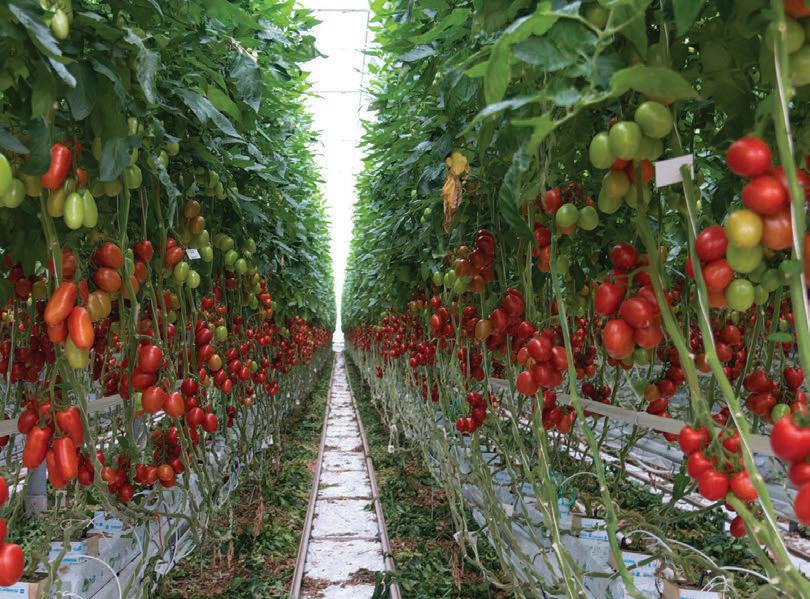



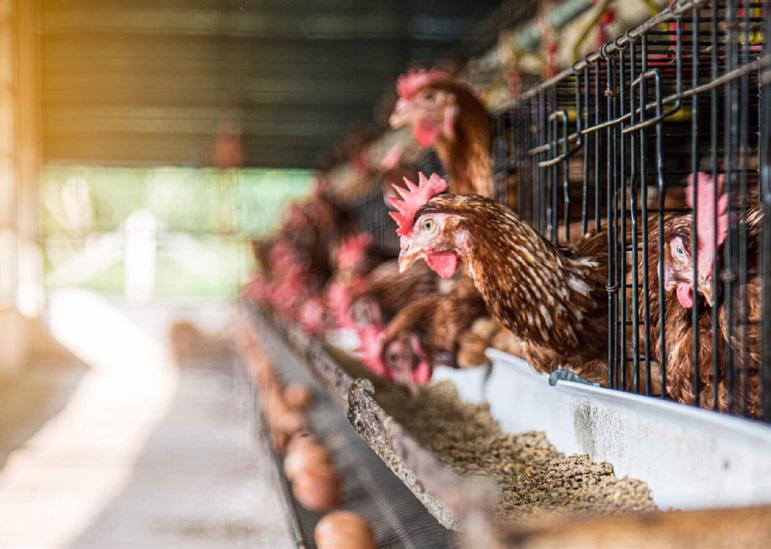

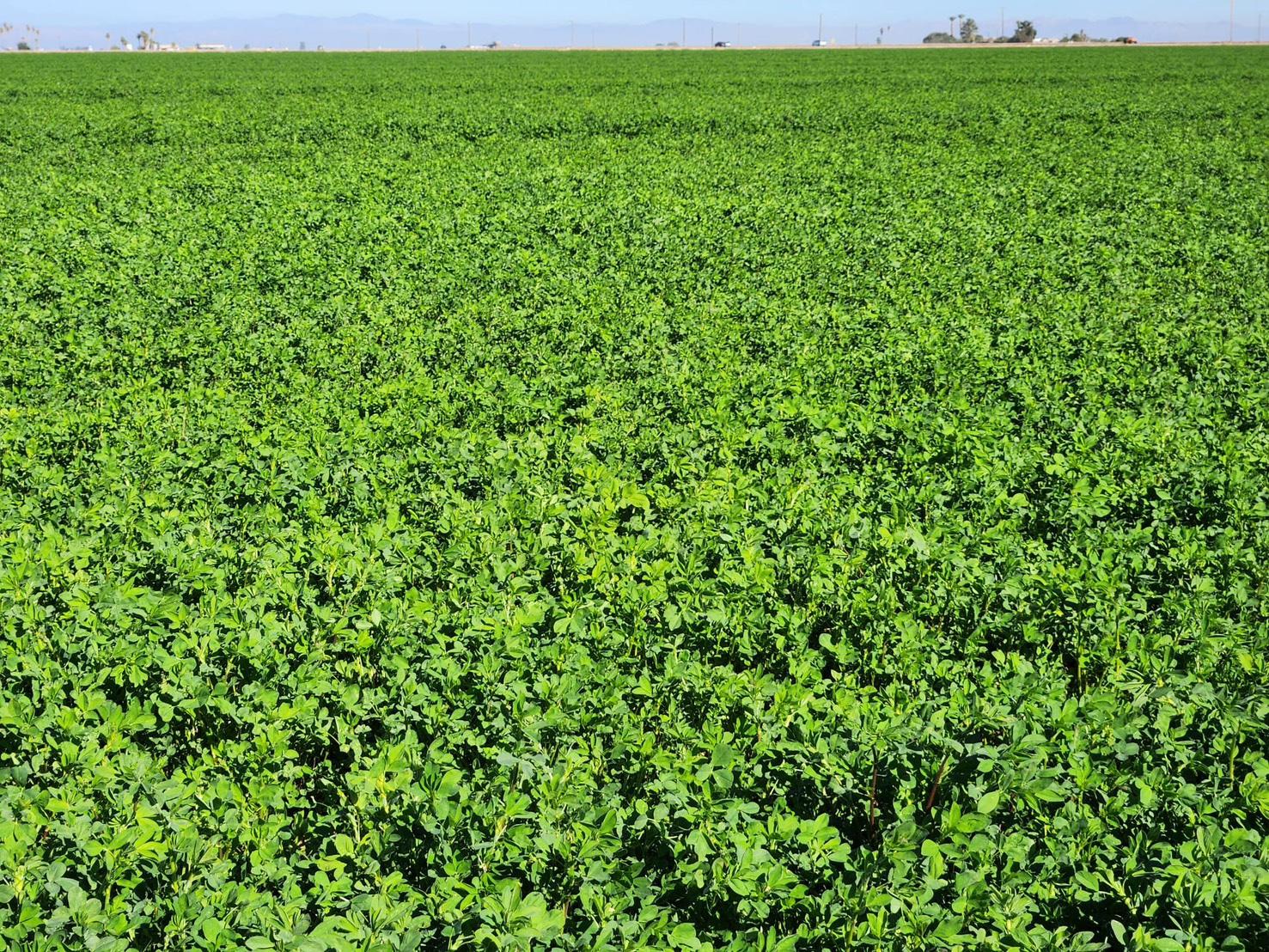

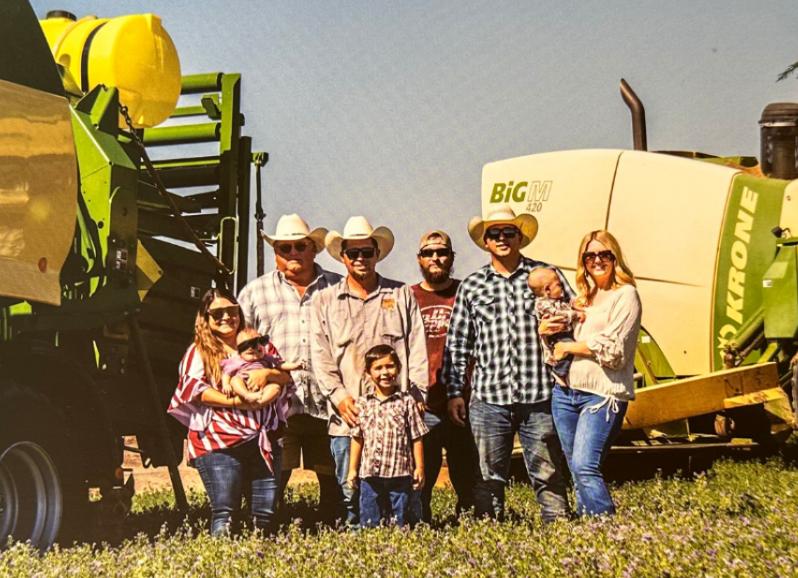






ADQ, an active sovereign investor with a focus on critical infrastructure and global supply chains, and Limagrain, an agricultural cooperative and international seed group, have entered into exclusive discussions for ADQ to acquire a 35 percent stake in Limagrain Vegetable Seeds (LVS), the vegetable seed division of Limagrain.
Headquartered in France, LVS is the global leader in the vegetable seeds industry, with a strong legacy dating back to 1743. Renowned for its best-inclass R&D capabilities and consistent innovation, LVS operates 56 research centers across 20 countries and offers the most extensive product
portfolio within the industry, covering 43 of the world’s 50 major vegetable crops. Its global manufacturing footprint includes eight facilities across six countries in Europe, North America, and Asia.
LVS’s seed portfolio includes globally renowned brands such as Vilmorin, Mikado, Harris Moran, Clause, and Hazera, serving growers across the Americas, Europe, Asia, and the Middle East and Africa.
As part of the proposed collaboration, LVS and Silal, an ADQ portfolio company specializing in agri-food technology, plan to establish a research and development partnership, leading to the creation of a joint venture
focused on desert-adapted vegetable genetics.
The collaboration aims to develop innovative genetic solutions that enhance the resilience of vegetable crops to extreme environmental conditions such as extreme heat, drought, and salinity. Research and development would be conducted at Silal’s Innovation Oasis in Al Ain, a purpose-built agritech hub equipped with state-of-the-art greenhouses, growth chambers, and seed testing laboratories, with LVS contributing its global expertise in vegetable genetics. Together, the partners are committed to advancing solutions for sustainability and food security in arid and semi-arid regions, particularly across the Gulf.
Anticipation is growing for the inaugural edition of Myplant & Garden Middle East 2025, set to take place at Dubai Expo City from November 15–17, 2025. As the region’s appetite for sustainable landscaping and green innovation accelerates, the exhibition has named Tanseeq Investment Group as its first official Strategic Partner, marking a key milestone in its expansion into the Middle East.
The partnership, announced at the 9th edition of Myplant & Garden in Milan, reflects the rapid growth of the UAE’s landscaping and horticulture sectors—driven by Vision 2030, climate-focused policies, and bold urban development plans.
Tanseeq’s involvement sends a strong signal: the Middle East’s green transformation is real, and it’s happening now.
Tanseeq Investment Group, a

powerhouse in the UAE and GCC landscaping scene, brings decades of experience and a track record of delivering large-scale, high-impact projects. From urban parks to megadevelopments, the Group champions sustainable design, water-wise solutions, and forward-thinking technology.
“We are honoured to be the first strategic partner of Myplant &
Garden Middle East. As the leading landscaping group in the GCC, we see this partnership as a key platform to advance innovation, sustainability, and cross-sector collaboration. It’s time for our industry to connect, evolve, and lead — and this exhibition is where it starts”, commented Naser Ahmed, Group CEO, Tanseeq Investment Group.
Bühler has opened its new Puffing Application Center in Uzwil, Switzerland, providing food and feed producers industrial-scale capabilities to develop innovative, plantbased, and affordable products. The center strengthens Bühler’s network of research and training centers, equipping customers with the tools and expertise to
SELECTA ONE ACQUIRES COMMERCIAL RIGHTS OF HIBISCUS ‘SUNNY CITIES’ FROM PIANTE KEICHER, ITALY
Selecta one, the worldwide operating and successful breeding and young plant company from Germany, is enlarging its portfolio by acquiring Piante Keicher’s share in the breeding group “Hibiscus Working Group”.
Hibiscus Working Group is a leading cooperation in the breeding and marketing of Sunny Cities Hibiscus. Members of the cooperation are Peeters Potplanten, Kwekerij Groenhof, Piante Keicher, Vireo and Agriom.
Piante Keicher is an ownermanaged young plant producer, located in the heart of "Agro Pontino", Latina, Italy. Founded in 1985 by Dieter Keicher the company is now known for its high-quality young plants of Hibiscus and Mandevilla. Since 2014 Piante Keicher is one of five members of the hibiscus working group of jointly developing the Sunny Cities assortment, which currently comprise around twenty varieties. Most recent breeding and selection efforts focused on varieties that can be grown under warmer climate conditions. Besides this climatespecific breeding work the Hibiscus Working Group makes constant efforts to develop varieties for normal, small and large pot sizes and standard Hibiscus trees.
test, optimize, and scale up puffed grain and pulse products rapidly and efficiently – all under one roof.
Puffing is a hydrothermal process that uses heat and pressure to significantly expand the volume of raw materials. The technology is versatile and applicable to a broad range of products –
cereals, confectionery, bakery items, and dairy applications. Their increased volume and porosity make them lighter and crispier. Puffing enhances digestibility by breaking down starches, extends shelf life by reducing moisture, and boosts nutritional value through preserving and easy enrichment with vitamins, minerals, or


th th On 19 & 20 January 2026, Dubai
Le Meridien Hotel and Conference Center, Dubai

• Meet your Buyers- Sellers, Impor ters & Expor ters, Manufacturers & formulators, intermediate manufacturers, packaging material suppliers.
• Network With More Than 1000+ Professional Visitors from World Over
• Oppor tunity for One -One Interaction Between the Buyers and Sellers
• Oppor tunity For Market Research & Access
• Gain Knowledge from Two Days plenar y sessions- listen to Industr y Exper ts, Scientist and Researchers
• Know about your competitors
• BSM & breakout rooms for one-one meetings.

Don't miss the oppor tunity to be par t of ICSCE Trade Show For more details contact : events@pmfaiindia.org www.pmfaiicsce.org



In conjunction with the launch of the 21st Liwa Date Festival 2025, the Abu Dhabi Agriculture and Food Safety Authority (ADAFSA) released the Abu Dhabi Date Varieties Guide, a comprehensive reference for the most prominent date varieties in the emirate. ADAFSA's pavilion at the festival will witness promoting the guide to help farmers, visitors, and stakeholders know more about the palm farming and date production.
Featuring 61 date varieties classified by their environmental and geographical traits, the guide clarifies varieties suitable
for arid regions and others adapted to high-humidity coastal areas. The guide further provides in-depth details on ripening times, production rates, unique traits for each variety, and recommendations to improve quality and productivity.
The guide highlights several prominent date varieties, including "Fard," widely grown in Abu Dhabi, particularly in Al Ain region. It is a commercial variety consumed both as fully ripe (Rutab), and dry (Tamer). Another variety is "Dabbas," a commercially significant variety thrives in arid environments such as the
Al Dhafra region. Furthermore, the guide introduces "Naghal" dates, an earlymaturing variety of high economic value, primarily consumed as fully ripe (Rutab).
In this regard, ADAFSA emphasized that releasing this guide aligns with its strategy to promote sustainable agriculture and provide farmers with accurate information for selecting environmentally appropriate varieties. Moreover, the guide will contribute to preserving the diversity of local varieties while enhancing the economic value of the emirate's date palm sector.
VIV MEA, the premier international trade show for the animal husbandry and agribusiness industry in the Middle East and Africa, is officially opening visitor registration for its highly anticipated 2025 edition. The event will take place from 25–27 November 2025 at the Abu Dhabi National Exhibition Centre (ADNEC) in the heart of the UAE capital.
VIV MEA has firmly established itself as the region’s go-to platform for professionals involved from feed to food, covering all sectors of the animal protein supply chain. This dynamic edition will once again bring together industry leaders, innovators, and stakeholders from around the world for three packed days of business networking, cutting-edge technology showcases, and knowledge exchange.
From poultry, dairy, and fish to eggs, cattle, calves, goats, and camels, VIV MEA 2025 will explore a comprehensive spectrum of animal husbandry. With a packed conference program, attendees can

expect forward-thinking sessions that cover the latest trends, challenges, and opportunities in sustainable farming, animal health, biosecurity, production efficiency, and more.
The exhibition floor will feature 500+ global and regional exhibitors, offering immersive product displays and live demonstrations of state-ofthe-art solutions in feed production, veterinary services, processing equipment, and agri-tech innovation. With 10,000 expected visitors onsite and a packed conference program, VIV MEA is the perfect opportunity for
industry professionals to discover new suppliers, products, and partnerships—all in one place. It is also worth-noting that for the first time ever, VIV MEA will feature a dedicated space highlighting aquaculture through the Aquatic Pavilion.
Attendees can also make the most out of the key sessions in place such as the Aquatic Conference (happening one day before the show), AgriBITs (during the show), and the 4th edition of the Poultry Marketing Roundtable (PMRT) scheduled on November 26.
BASF Agriculture Solutions Egypt, a business unit of the chemical company BASF, has officially rolled out its specialized vegetable seeds brand, BASF | Nunhems, in Egypt, during a landmark event at the Pyramids of Giza. This key milestone is part of BASF’s business expansion in the region and its commitment to supporting Egyptian farmers with tailored, innovation-led full agricultural solutions.
This operational launch of the fully localized model for vegetable seed solutions in Egypt focuses on introducing a new generation of highperformance varieties aimed at boosting yield, enhancing quality, and supporting sustainability. Backed by more
than 100 years of breeding expertise and 46 global R&D stations, the new business model is set to drive local job creation and support Egypt’s plan to increase agricultural exports by 20% in 2025.
On the same front, Egypt’s agricultural sector continues to show resilience and potential, with exports growing 11% yearon-year in 2024 to reach 8.6 million tons. As the government sharpens its focus on sustainable development, BASF and Nunhems are uniquely positioned to contribute through local insight, global innovation, and a deep understanding of farmer needs.
In this context, Ms. Silvia Cifre, Vice President Marketing
& Sales at BASF | Nunhems, added: “We are excited to initiate commercial operations through BASF Egypt’s unique business model, a market with enormous potential for highvalue vegetable production.
With a portfolio of over 1,200 commercial seed varieties across 20 vegetable crops and nearly 80 new varieties introduced each year, BASF | Nunhems is uniquely positioned to support Egyptian growers with innovative seed varieties and solutions tailored to local needs.
Our business expansion here is part of a broader regional vision to bring innovation closer to the field—and help farmers grow ‘vegetables people love.’”




A high-level delegation from the Near East Plant Protection Organization (NEPPO) has conducted its first official visit to the Food and Agriculture Organization (FAO) Representation in Morocco, marking a key milestone in advancing regional collaboration on plant health and protection across the Near East and North Africa (NENA) region.
The NEPPO delegation was led by Dr. Mohamed Alkuriji, Chairman of NEPPO’s Executive Council, and Dr. Mohamed El Habib Ben Jamaa, Executive Director of
NEPPO. They were accompanied by Dr. Thaer Yaseen, Regional Plant Protection Officer at the FAO Regional Office for the Near East and North Africa (FAO-RNE), and Dr. Mohamed El Hadi Sidatt, Regional Plant Protection Officer at FAO’s Subregional Office for North Africa (FAO-SNE).
The delegation was warmly received by Mr. Alexandre Huynh, FAO Representative in Morocco, who welcomed the visit as a valuable opportunity to reinforce regional solidarity and technical collaboration in plant protection.
The visit reflects the joint commitment of FAO and NEPPO to enhance regional coordination, foster technical cooperation, and promote sustainable plant protection
strategies to safeguard agricultural productivity and food security across the region.
Discussions during the meeting focused on NEPPO’s mandate, ongoing programmes, and regional initiatives in collaboration with FAO aimed at safeguarding plant health, facilitating safe trade, and addressing emerging threats posed by plant pests and diseases. FAO and NEPPO explored avenues for technical cooperation, capacity building, and joint activities to support sustainable agriculture and food security in Morocco and across the broader region.
The visit underscored the shared vision of FAO and NEPPO in fostering regional cooperation and harmonized efforts in plant protection, contributing significantly to achieving the Sustainable Development Goals (SDGs).
Signify (Euronext: LIGHT), the world leader in lighting, is proud to unveil the Philips GrowWise smart spectrum - an innovative algorithm designed to automatically optimize horticultural LED lighting based on real-time sunlight irradiation. Signify empowers growers to achieve energy savings or boost crop growth with just a few clicks, unlocking a new era of intelligent, data-driven lighting strategies. By replacing less efficient spectra by more energy-efficient ones, GrowWise smart spectrum is designed to save on energy use or boosts crop growth by up to 6%.
“Philips GrowWise smart spectrum has been fed with the data from 18 years of in-depth research and leadership in light-plant interaction,”
said Udo van Slooten, sales leader horticulture LED solutions at Signify.
“This depth of knowledge allows us to guide growers through fine-tuning and optimizing their lighting. The future isn’t just in smarter lamps – it’s in intelligent services that ensure the grower’s light works for them, delivering predictable ROI and better business outcomes. The user-friendly dashboard gives growers clear insights into energy savings, light efficiency, and spectral distribution –safe for crops and tailored to business priorities.”
To truly unlock lighting intelligence, growers need three components: a multi-channel controllable LED lamp, a powerful control system, and smart algorithms that optimize lighting for specific outcomes.

By adding the GrowWise smart spectrum, Signify enables an intelligent lighting system that works seamlessly with Philips GrowWise control, a proven solution already installed at over 750 horticultural sites worldwide. The system integrates directly with leading climate computers and offers growers intuitive control over their lighting strategies.



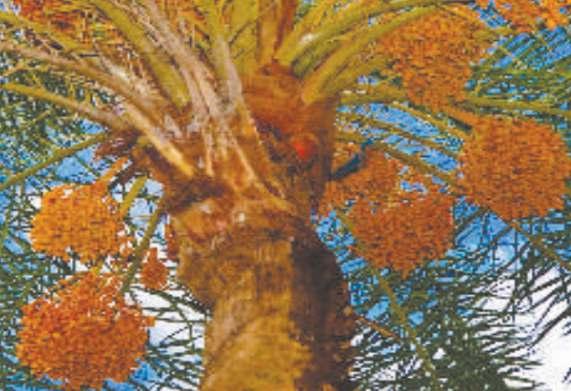


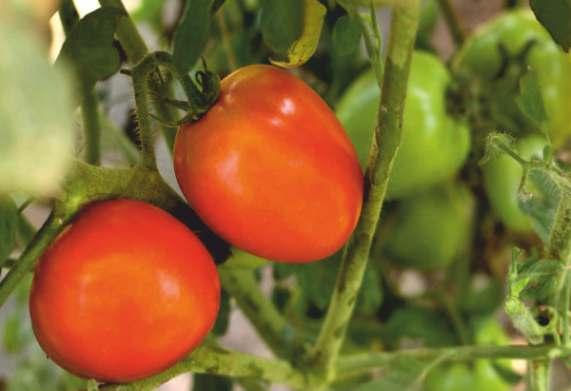

Pro Farm Group has received the U.S. Environmental Protection Agency’s (EPA) coveted Green Chemistry Challenge Award for Design of Safer and Degradable Chemicals.
The award follows the development of RinoTec™ technology, a biocontrol agent produced from a novel bacterial organism found in nature and enhanced through proprietary, patented fermentation and processing methods. The resulting insecticidal and nematicidal property offers a new and unique mode of action with the potential to replace or reduce the use of standard synthetic pesticides used to control soil-dwelling
and foliar crop pests on millions of acres around the globe.
"At Pro Farm Group, our goal is to equip farmers with effective and efficacious crop protection technologies that help our industry minimize or eliminate the use of hazardous substances,” said Keith Pitts, SVP-Strategic Solutions and Government Relations. "Receiving this Green Chemistry Award is an honor and positions our company among a small cadre of pioneering organizations that have successfully created alternatives to synthetic chemistries."
As required by the EPA, RinoTec was subjected to
multiple toxicity tests by thirdparty laboratories to assess its risks to human health and nontarget organisms, such as birds, fish, aquatic organisms, crops, wild flora and fauna, pollinators and other beneficial insects.
The EPA granted RinoTec technology an exemption from pesticide residue tolerance, confirming the technology's low risk to farmers, farm workers and consumers. Products powered by RinoTec will also have minimal personal protective equipment (PPE) requirements, a 4-hour restricted entry interval (REI), and a 0-day pre-harvest interval (PHI) following application.

The 22nd International Crop Science Conference & Exhibition (ICSCE 2025 Delhi) organized by Pesticides Manufacturers and Formulators Association of India (PMFAI) took place on 10th & 11th June 2025 at Hotel Pullman Novotel, New Delhi Aerocity, New Delhi.
The two-day event commenced auspiciously on the morning of June 10, 2025, with a welcome address by PMFAI President, Mr. Pradip Dave. In his inaugural speech, Mr. Dave underscored the
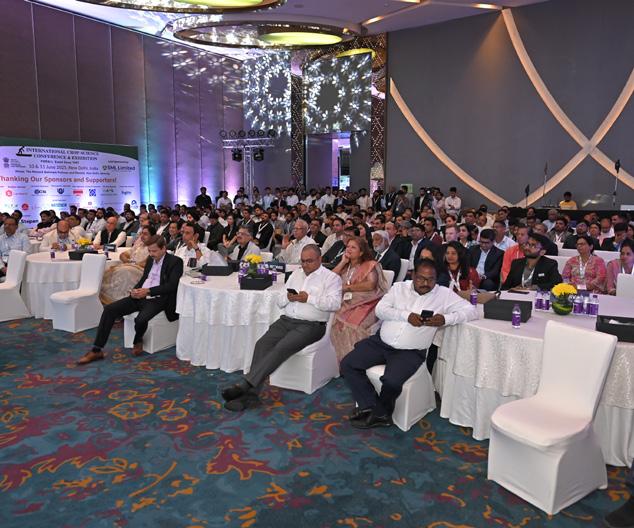
event's importance and its journey since PMFAI organized the first event in 1997 in Mumbai. The International Crop Science Conference & Exhibition (ICSCE), serving as an international trade platform, fosters business relationships among companies within the Agrochemical, Agri biological and allied sectors.
At ICSCE 2025 Delhi, 126 leading companies exhibited their product portfolios over the two-day event. The conference was a significant success,
drawing over 1100 registered delegates, including participants from various international locations.
In his Inaugural Address, Mr. Pradip Dave, President of PMFAI, emphasized the critical role of the Agri Inputs industry in ensuring global food security. He stated that with the everincreasing global population, boosting food production is paramount, and India plays a vital role in this endeavor. Mr. Dave specifically highlighted the indispensable contribution of crop protection chemical products in enhancing both agricultural and horticultural output. Furthermore, he underscored the significant efforts of PMFAI and ICSCE in driving the development of India's agrochemical sector and promoting exports from the country. Mr. Dave additionally drew attention to the growing significance of the Agri-biological sector and its increasing contributions to the agricultural industry.


Innovative equipment born from our long experience in the preparation of soils, both for minimum tillage and deep work. Suitable for low Hp tractors without losing the main focus of our machines: elevated productivity connected to costs reduction and lower impact to environment.
26011 Casalbuttano (Cremona) - ITALIA
Via Giovanni Paolo II, 12
Tel. +39 0374 362680 Fax +39 0374 362280
info@ma-ag.com
www.ma-ag.com maagmacchineagricole
The combination of different tools permits to prepare the soil in one passage, both on minimum (15 cm working depth) to deeper tillage (up to 45 cm) according to the farmer’s needs.
FEATURE
Front Straight Anchors Open the soil by working from 15 to 45 cm
Star
Break the clods and residues
Cage Rollers Levelling for a perfect soil
Kipster, a global leader in animal welfare and sustainable egg farming, announces the use of in-ovo sexing technology. This serves as an alternative to culling male chicks at hatch.The company is second in the U.S. to use this cutting-edge approach. It allows for the sex determination of chick embryos in hatching eggs during incubation. The eggs with males are immediately removed once identified. This prevents the hatching and culling of the dayold male chicks, as is common in the U.S. egg industry.
350 million male chicks killed yearly in the U.S. egg industry
The U.S. egg industry kills over 350 million male chicks each year after they hatch because they are deemed useless. They do not lay
eggs and are not bred to put on as much weight as fast as broiler chickens. Opposed to the common practice of decades ago, when people consumed the by-product of egg farms as food — the male chickens. Nowadays, people eat predominantly meat chickens from the broiler industry.

Kipster aims to raise roosters instead of killing them
Kipster’s goal is to give roosters a place in the food system. In doing so, the company makes use of all animals born into its poultry farms. Kipster is the very first
commercial egg producer in the U.S. to not cull its male chicks when its U.S. farm opened in 2022. This approach is similar to Kipster’s practices in Europe. However, the company had to resort to doing so for the first time in 2024. This was due to a lack of suitable infrastructure and a retail market for males from breeds commonly used for egg production.
Iberflora, the International Fair for Plants and Flowers, Landscaping, Technology, and DIY Gardening, which in 2025 will strengthen its international presence and establish itself as a strategic meeting point for professionals in the green sector. The next edition, to be held from October 14th to 16th at Feria Valencia, will feature professional buyers from more than thirty countries.
Thus, within the framework of the Iberflora Buyers Club, the fair's buyer program, hundreds of international invitations will be issued for the 2025 edition of Iberflora Connection, an
effort aimed at attracting high-profile purchasing decision-makers. The candidates will range from garden centers to nursery growers, as well as landscapers and gardening companies interested in technology, a strategic focus of Iberflora 2025.
France, Italy, Portugal, the United Kingdom, Germany, Belgium, the Netherlands, Morocco, and Algeria are the countries chosen for the event along these strategic lines. Other countries also include Austria, China, Croatia, Denmark, Greece, Hungary, Japan, Kuwait, Libya, Panama, Poland, the Czech Republic, Romania, Switzerland, Turkey, and the United States.

As a notable new feature of this edition, Iberflora will have the support of ICEX Spain Export and Investment, which has launched a reverse mission
for international buyers in collaboration with Feria Valencia. This initiative will invite foreign companies primarily from Europe and North Africa.
Of course, the joint work with IVACE will continue. This investment is made through the Chamber of Commerce and brings VIP trade visitors to Iberflora at every edition.
It's worth noting that in 2025, Iberflora will create an exclusive Register now to attend the region’s most influential meeting point for stakeholders operating across the animal protein value chain
VIV MEA, the premier international trade show for the animal husbandry and agribusiness industry in the Middle East and Africa, is officially opening visitor registration for its highly anticipated 2025 edition. The event will take place from 25–27 November 2025 at the Abu Dhabi National Exhibition Centre (ADNEC) in the heart of the UAE capital.








SPACE 2025 will take place from Tuesday, September 16 to Thursday, September 18 at the Parc-Expo in Rennes. Following on from the huge success of SPACE 2024, this 39th edition

promises to be equally exceptional. More than 1,200 exhibitors and 100,000 visitors from 120 countries will once again gather in the heart of the Grand Ouest region, the meeting place for Planet Livestock during the agricultural season.
The current geopolitical context is marked by significant impacts on agricultural and food balances. In this highly fluid environment, farmers remain tasked with addressing food, as well as environmental,
social, and energy challenges. This complex equation requires ever-increasing professionalism, the use of appropriate tools, and an open outlook on the world.
SPACE is here as a cuttingedge trade show for all livestock sectors to offer its participants solutions tailored to farmers worldwide.
For its 39th edition, SPACE will focus on artificial intelligence at the service of farmers , to aim for improving precision, performance, working comfort and animal health management.
The 23rd Kunming International Flowers & Plants Expo (IFEX) is set to draw over 500 exhibitors from countries including the United Kingdom, the Netherlands, and France from September 19 to 21, 2025, at the Kunming Dianchi International Convention and Exhibition Center, reaffirming Kunming’s status at the forefront of global horticultural innovation and trade.
As one of Asia’s leading floral industry events, this year’s IFEX will cover 60,000 square meters, with over 90% of the exhibition space already booked. The expo will feature specialized exhibitions, industry forums, interactive experiences, and live demonstrations, providing a comprehensive platform for showcasing global advancements in floriculture and fostering international trade cooperation.
Key highlights include the strategic location of Kunming in Yunnan—China’s floral heartland and a major flower distribution hub in Southwest China—and robust
international collaboration. With France as the guest country of honor, national pavilions will spotlight floral artistry and indigenous varieties. Notable French exhibitors include Meilland International (roses), Morel (cyclamen), and Georges Delbard (roses and fruit trees), while top Dutch breeders such as De Ruiter, Van Den Berg Roses, Schreurs, and Rijkland will present their latest innovations. Additionally, a new Tropical Plant Pavilion will feature delegations from Thailand, Taiwan, and leading
domestic tropical plant brands. IFEX 2025 will host professional forums aimed at driving industry innovation and knowledge sharing. These sessions will delve into new plant variety protection in floriculture, exploring emerging strategies to secure intellectual property in flower breeding.
Experts will also focus on the modernization of floriculture infrastructure, discussing the latest agricultural technologies that are transforming traditional practices into more efficient, high-tech operations.
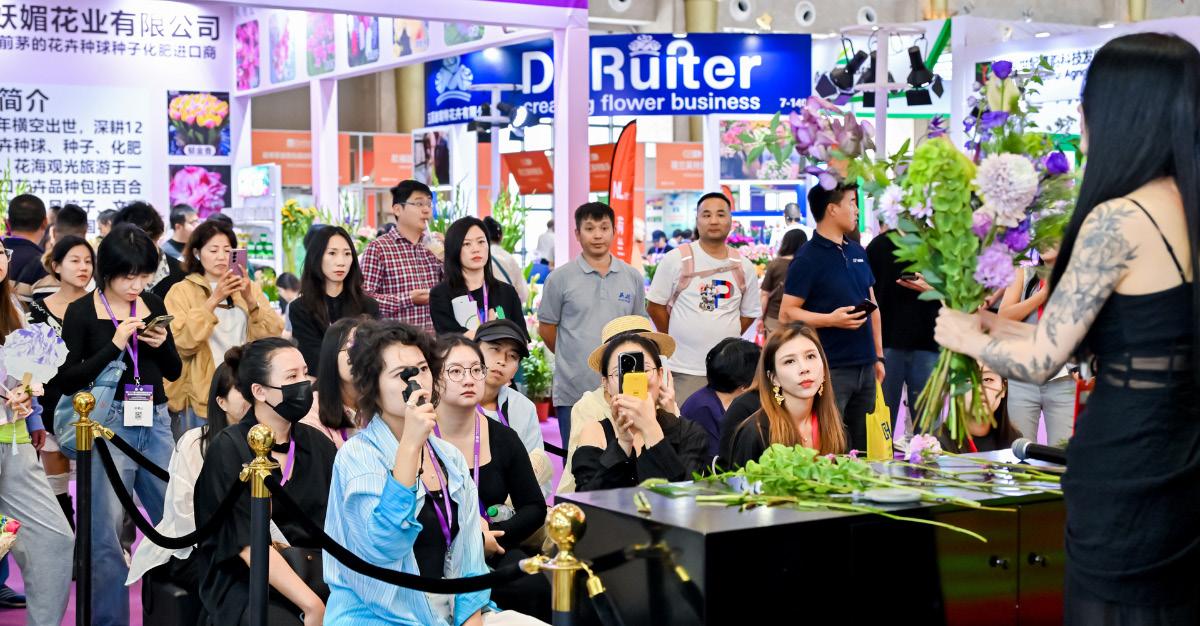




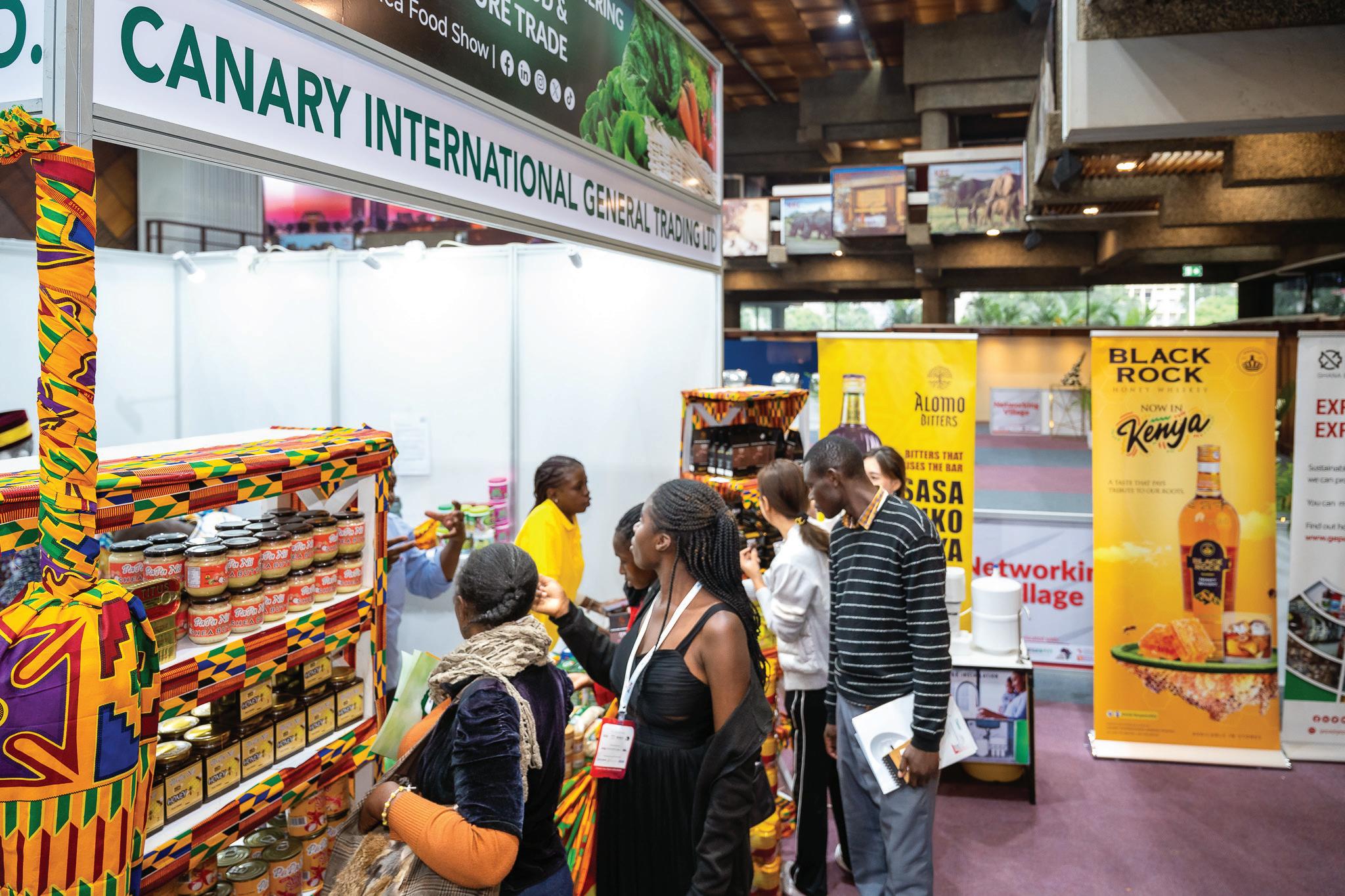


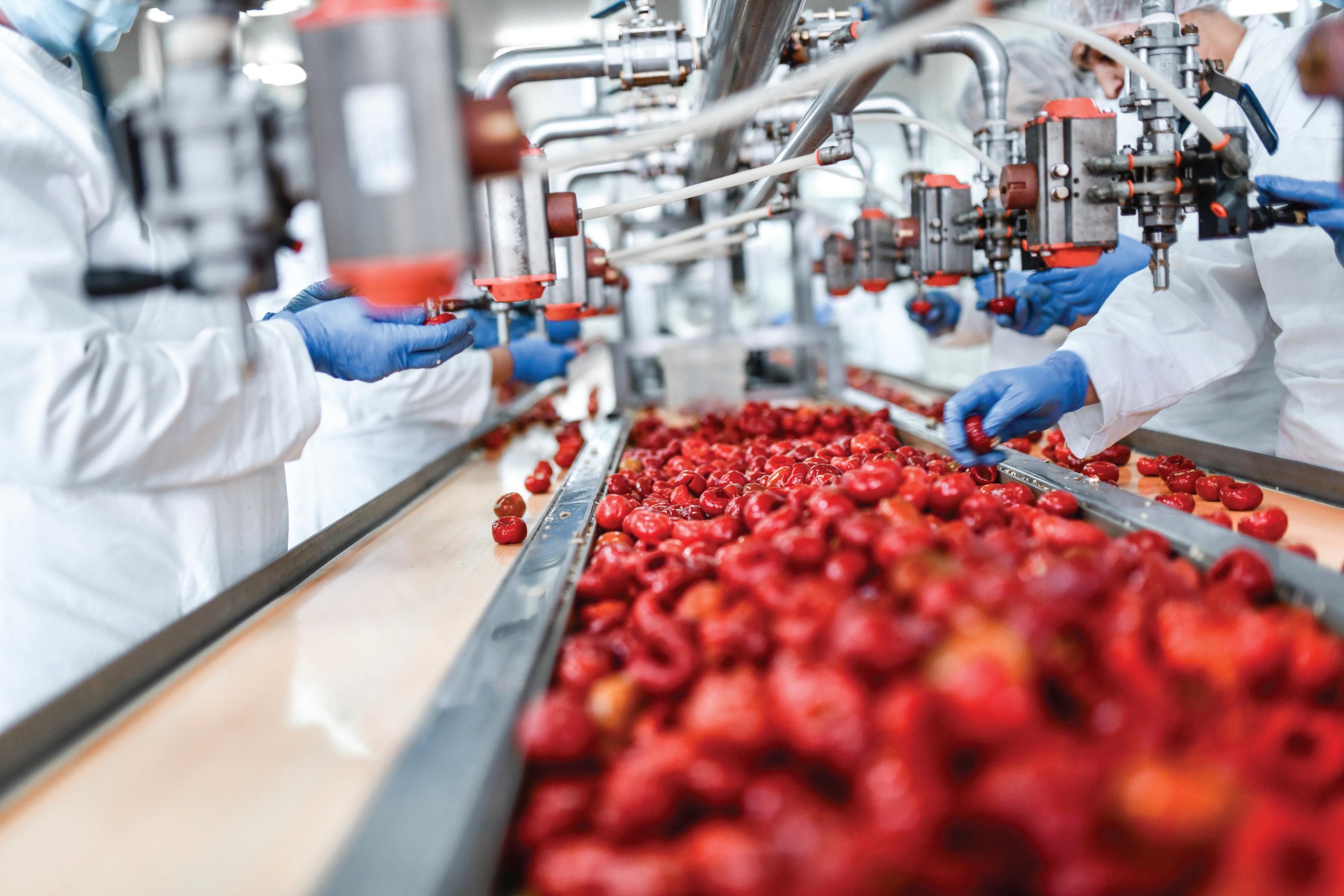





Topcon Agriculture has introduced the next generation of its boom height control technology for agricultural spraying applications with the launch of the UC7 Plus. Built on the foundation of Topcon’s Norac boom height control technologies, the UC7 Plus allows farmers and crop service providers to further reduce inputs, improve crop performance, and reduce equipment maintenance costs with improved height and spray control capabilities.
Compatible with most selfpropelled and pull-type sprayers, the new technology features new sensor technology that improves
performance and reliability. This includes the new dynamic chassis sensor (DCS-1) that enhances the stability and response of the boom control system, and the latest MS-1 sensors with MAX Sense ultrasonic technology for improved performance in challenging terrain. These sensors are designed to withstand the rigors of the field with corrosionresistant GF nylon housing, a protective transducer screen, and multi-axis vents.
“The combination of proven legacy solutions with the latest in precision technology serves up an extreme opportunity for lower operating and input costs, and lower equipment repair costs,”
said Nick Townsend, Topcon Agriculture vice president and segment leader for smart implements. “Spraying system advances increasingly provide farmers and service providers with an opportunity to achieve a greater return on investment on their equipment, either through upgrades or new investments.
The UC7 Plus directly drives those savings,” he said.
“These new capabilities also improve sustainability efforts in applying only the needed amount of spray, where it is needed, to achieve the best results — supporting compliance efforts, cost savings, and optimal crop performance.”
New Holland CX and TC straw walker combines, plus compatible headers, are all updated for 2026 to make set-up easier and harvest more productive.
Identifiable via new end panels that match the ‘Natural Flow’ styling of the latest New Holland combines, New Holland Varifeed™ headers feature multiple updates to enhance intake and minimize losses. All Varifeed™
models offer 575mm of fore-aft knife travel to allow adjustment for highvolume crops such as rapeseed.
The new inline knife drive on all models means output shaft motion is now fully linear, delivering direct, efficient power for smooth, precise cutting with less vibration, noise, and with greater cutting force — especially in tough materials and at higher ground speeds. Furthermore,

the previous belt drive design has been replaced by gearboxes and a telescopic shaft, reducing driveline maintenance needs.
Where currently only the largest 12.5m (41ft) Varifeed™ header features a dual, unsynchronized knife drive, both the 12.5m (41ft) and the 10.5m (35ft) Varifeed™ now feature a 100% synchronized dual knife drive, with the right-hand knife driven via the in-feed auger, significantly reducing vibration.
Knife speed has been increased by 11% to 735rpm to enable higher forward ground speed with the same cutting performance. This is matched by the intake capability of a heavy duty 660mm reinforced auger. The new auger height adjustment assembly provides two pre-set positions: high for rapeseed and low for small grains. This new feature reduces adjustment time by 75% – from 20 minutes to just five – on single span augers.



In the face of climate change, woody plants and trees are increasingly becoming the focus of the green industry. IPM ESSEN 2026, the world’s leading trade fair for horticulture, is sending a strong signal in this regard: The new “Woody Arena” is creating an innovative meeting place for knowledge, practice and future topics relating to woody plants, urban greening and climate adaptation. From 27 to 30 January 2026, interested parties will receive many new impulses for their business here and can network with experts.
The new arena in the middle of Nursery Hall 7 offers trade visitors a unique platform: daily changing lectures, panel discussions and presentations take up
current developments in practice, research and breeding. The focus is on future-proof tree assortments for cities, climate-resilient species for urban areas and new varieties for forests and private gardens.
The main topics of the Gehölze Arena include:
Future tree assortments for cities and private gardens
Climate-tolerant species and findings from sighting projects
Professional care and pruning
Requirements for tree locations in cities·
Hedge planting for biodiversity
A daily special topic and accompanying moderation ensure a lively, interactive forum.
TO 540,000
The 11th edition of the India Maize Summit, organized by the Federation of Indian Chambers of Commerce and Industry (FICCI) in association with Indian Institute of Maize Research (IIMR), was inaugurated by Hon’ble Union Minister of Agriculture and Farmers Welfare & Rural Development, Shri Shivraj Singh Chouhan.
In his keynote address, Shri Chouhan emphasized that “Farmers’ sewa is our mool mantra,” reaffirming the government’s commitment to farmercentric policies. He outlined a multipronged strategy to boost maize production, and increase farmer incomes, while ensuring environmental sustainability for future generations.
Speaking at the summit, the minister outlined an ambitious roadmap to transform India’s maize sector, emphasising that production can be boosted through better research, farmer education, and improved agricultural practices.
India’s maize production has grown from 10 Mn MT in the 1990s to 42.3 Mn MT in recent years, with a projected target of 86 Mn MT by 2047. However, productivity remains at 3.7 MT/Ha—below global standards. States like Bihar and West Bengal are leading in productivity.
More and more dairy farmers are choosing robotic milking because of labor savings, improved cow comfort, and valuable data insights. The

M2erlin milking robot from Fullwood JOZ perfectly responds to this. This robot is designed for maximum flexibility in every barn and optimal results in milk production, animal health, and ease of use.
The M2erlin stands out with its unique Twin-entry/Twin-exit concept. This double entry and exit enable a natural cow flow without queues or bottlenecks.
Additionally, it offers a compact separation possibility. Cows can easily be selected for pasture or straw pen without the need for extra separation gates—a win-win.
Another advantage of the compact robot box and the double entry and exit is the wide range of installation options, such as side-by-side, tandem, parallel, or head-to-head setups. Ideal for both new and existing barns.
































As the founder and CEO of TAB Group, I am honoured to welcome thought leaders, innovators, investors, and growers to the 6th Global Vertical Farming Show 2025 in Dubai this September. Our mission is to unite the entire vertical farming ecosystem under one roof, fostering collaboration that drives transformative change in food security, nutrition, and climate resilience. Over two intensive days, we will showcase pioneering technologies and practical solutions that address the global challenge of sustainable food production. I look forward to meaningful engagements that will spark new partnerships and accelerate the next wave of growth in controlled-environment agriculture.
Mark your calendars for 10–11 September 2025, when the Global Vertical Farming Show (GVF) returns to Festival Arena, Dubai, for its sixth edition in the region. More than a conference, GVF is the Middle East’s premier vertical farming event, uniting global thought leaders and stakeholders across the value chain such as, policy makers, growers, technologists, investors, architects, and agro-industrial players verticalfarmingshow.com.
The theme for this year “Transforming Food Systems to achieve better nutrition, enhance Food Security and improve climate change outcomes” speaks directly
to today’s most pressing global issues.
A Snapshot of Scale & Influence GVF 2025 isn’t just ambitious it’s expansive:
• 5,000+ targeted attendees, including 500 senior executives
• 750 vertical farming and allied companies
• 100 exhibitors and sponsors, including 50 expert speakers
• Delegates and participants hail from over 35 countries
Over two days of panels, exhibits, and leadership exchanges, the event promises unmatched opportunities for networking, deal-making, and building strategic alliances.
Dubai’s strategic positioning as a sustainable innovation hub backed by its progressive policies, robust infrastructure, and market-driven ambience renders it an ideal stage for GVF.
1.Cutting-edge exhibition: Attendees will explore offerings across grow racks, automation systems, LED lighting, climate control, and IoT-based precision agriculture.
2.High-calibre conference sessions: The agenda will dive into scaling operations with AI/IoT, policy frameworks for urban farms, crop diversification, and multi-tier yield acceleration.
3.Strategic matchmaking: Oneon-one business meetings will facilitate partnership discovery and

financing discussions.
4.Showcase of success stories: From modular container farms to skyscraper greenhouses, real-world implementations will be spotlighted for replication and investment.
For the readers and partners, GVF 2025 is the ideal vantage point to gauge the pulse of innovation, investment, and policy in vertical farming. With major players converging in Dubai, structured dialogues around sustainability, food tech and urban agriculture will reach new intensity. This makes GVF 2025 a must-cover event, offering extensive content for expert analysis, interviews, and trend forecasting.
For participation and partnership opportunities, connect with: Mohammad Talha Sarwar –Project Manager
Email: mohammad.talha@tab-global.com
Contact: +971 58 532 6014

This year, the event will take place from Tuesday, November 18, to Friday, November 21, at the ANFAŞ Expo Center, Antalya and will showcase top-tier companies in greenhouse technologies, irrigation systems, seed production, plant
nutrition, and plant protection products, connecting them with international visitors. With over 40,000 international visitors expected, GROWTECH. ANTALYA has expanded its exhibition space with the newly added 7th hall.

New Highlights for 2025
GROWTECH. ANTALYA continues to innovate and enrich its offerings with new events and features. This year, the event will debut the Sustainability and Innovation Stages, where the latest topics in the agricultural sector will be discussed. Discussions will focus on innovative approaches and technologies shaping the future
of agriculture. Additionally, the new Start-up Zone will provide a platform for entrepreneurs to connect with leading industry professionals and investors. The event will also host its signature events, including the Plant Breeding Project Market and the ATSO GROWTECH Agricultural Innovation Awards, fostering collaboration and innovation within the sector.
International Participation at Record Levels
Building on last year’s success, which saw 42% of participants from international markets, GROWTECH ANTALYA aims to further increase this figure. The event will feature seven country pavilions, including China, Germany, India, the Netherlands, Spain, South Korea, and, for the first time, Greece. This expansion underscores the event's growing global appeal and commitment to fostering international partnerships.
Enhanced Visitor Experience
To accommodate the anticipated influx of visitors and exhibitors, GROWTECH. ANTALYA has made significant improvements to its infrastructure. Parking facilities have been expanded, and traffic flow during the event will be optimized to ensure a seamless experience for attendees.
GROWTECH. ANTALYA continues to set the standard for agricultural trade fairs, offering unparalleled opportunities for networking, innovation, and collaboration. Don’t miss the chance to be part of this premier event shaping the future of agriculture!

More Information:
Tel.: +90 212 808 05 90 Whatsapp: +90 530 525 42 10 Email: GrowtechCS@informa.com www.growtech.com.tr





GreenTech Amsterdam 2025 once again proves to be the leading platform for the global horticulture community. The event welcomed over 11,800 visitors and saw a notable shift in audience composition, with increased attendance from growers, breeders, investment companies, and retail professionals. All six theaters with topics like remarkable trends in AI & Robotics, crop intelligence, retail and health, with 80 sessions and 200 speakers, were packed throughout the event, reflecting the industry's eagerness to learn, get inspired, and actively engage with the knowledge programme. GreenTech took place from 10 to 12 June at RAI Amsterdam.
Mariska Dreschler, Director Horticulture - GreenTech Global: “This year’s edition of GreenTech Amsterdam truly showcased its international appeal, with visitors from 120 countries. The top five countries represented were the Netherlands, Germany, the United Kingdom, South Korea, and Canada. We had the honor of welcoming delegations from 42 nations such as Kingdom of Saudi Arabia, Mozambique, and Egypt, and hosting 550 exhibitors from 41 countries on the show floor. Additionally, we received 47 impressive entries for the Innovation & Concept Awards, highlighting the industry’s drive for progress and innovation. We also put

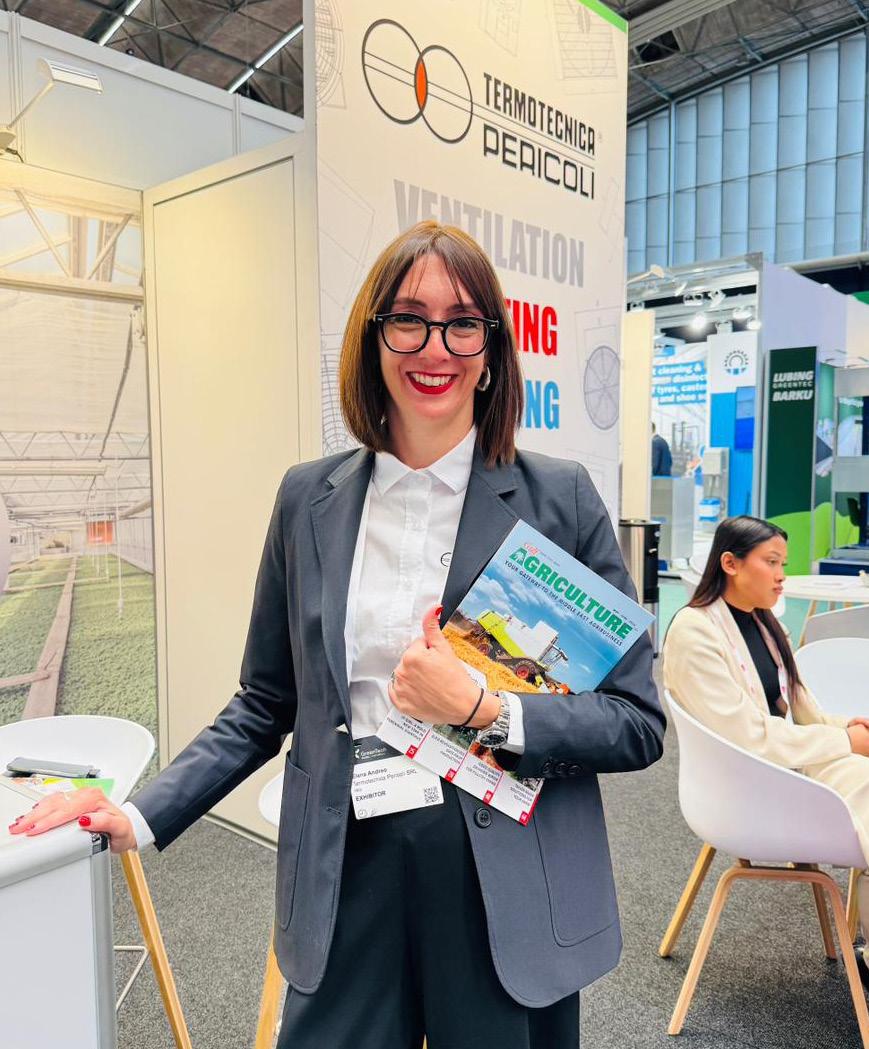
significant effort into organizing several subevents such as the ‘Dutch Grower’s Day’ on Wednesday to attract more Dutch professionals and the Power Day about data and AI — a focus that clearly paid off."
The next edition of GreenTech Amsterdam will take place on Tuesday 9, Wednesday 10 and Thursday 11 June 2026 at RAI Amsterdam. The exhibition is a global meeting place for all horticultural technology professionals with the focus on the early stages of the horticultural chain and the current issues growers face. GreenTech is supported by AVAG, the industry association for the greenhouse technology sector in the Netherlands.
• Nurseries
• Machinery Greenhouses







In the world of landscape design and large-scale greening projects, palms play a vital role in bringing elegance, shade, and tropical flair to any setting. From the stately Sylvester Palm (Phoenix sylvestris) to the graceful Adonidia (Christmas Palm), the versatile Pygmy Date Palm (Phoenix roebelenii), and the timeless True Date Palm (Phoenix dactylifera), these iconic species have long been prized for their aesthetic value and resilience.
But behind the beauty of a well-grown palm lies the foundation of its health: a strong, well-structured root system. At GrowinBag™, we’ve designed a solution that meets the needs of palm growers and landscapers

alike a high-performance root management system that works in harmony with nature.
What Makes GrowinBag™ Different?
Our top-quality prime virgin materials encourage natural air root pruning. As roots reach the edges of the breathable bag, they are air-pruned stimulating dense, fibrous growth and preventing root circling. This process results in:
• Stronger root architecture
• Faster transplant establishment
• Healthier, more uniform trees
• Improved nutrient uptake and water efficiency
These benefits are particularly critical when cultivating palms, which are often sensitive to

transplant stress. GrowinBag ensures the root ball remains intact, reducing shock and improving survivability across all species.
In recent seasons, leading growers have successfully cultivated a wide variety of palms in GrowinBags™, including:
• Sylvester Palms: Known for their symmetrical shape and silver-green fronds.
• Date Palms: A symbol of heritage and value, especially in Middle Eastern landscapes.
• Adonidia Palms: Compact, ornamental, and popular for residential projects.
• Pygmy Date Palms: Ideal for smaller spaces and mixed planting designs.
Each of these palms has demonstrated exceptional health, root performance, and growth uniformity when raised in our bags from young liners to mature specimens.
GrowinBag™ isn't just a container it’s a professional growing system. It minimizes transplant failure, and produces plants that are ready to perform in the field.
Whether you're managing a large palm nursery or specifying palms for luxury developments, our bags provide consistency, efficiency, and results.



As seed multiplication efforts for the durum wheat variety Jawahir continue, farmers in drought-stricken regions of Morocco get a first taste of its potential.
We prefer not to plant. It’s too dry,” says a farmer in Sidi Abdellah El Bouchouari, Tiznit, in the south of Morocco.
With most areas receiving the first rains more than two months after the usual start of winter, the 20242025 farming season in the south of Morocco is proving very dry again. This threatens Morocco's cereal production, including durum wheat, a crop vital to the country’s food
security. Used to make couscous, bread and pasta, durum wheat is enormously important in Morocco and across the globe. In Northern Africa, people consume it daily, providing crucial calories and protein. The dry climate is nothing new to those living off the soil. In Morocco, farmers have managed to survive and produce this cereal with little water for centuries.
However, with recordbreaking droughts in the past decade, farmers are


struggling to make a living. Where once golden crops dominated the landscape, brown, drought-stricken fields now prevail.
A New Hope Jawahir – which means “jewel” in Arabic – was developed using genes from Iraqi Triticum araraticum, a wild ancestor of durum wheat which had been safeguarded in the genebank of the International Center for Agricultural Research in the Dry Areas (ICARDA). Released in Morocco in 2023 by the National Institute for Agricultural Research in Morocco (INRA), Jawahir is the result of over ten years of research and testing. That process was supported by the Crop Trust’s Biodiversity for
Opportunities, Livelihoods and Development (BOLD) Project.
Funded by the Government of Norway, BOLD strengthens food and nutrition security worldwide by supporting the conservation and use of crop diversity.
“Wild plants, which have survived millennia of extreme climatic conditions without the help of farmers, contain traits that can help us build resilient crops capable of withstanding the pressures of today’s climate crisis,” says Dr. Benjamin Kilian, Senior Scientist at the Crop Trust, an international organization dedicated to conserving crop diversity and making it available for everybody, forever.
Developing a new crop variety takes a lot of time and effort. As part of the BOLD Project, ICARDA and INRA have tested hundreds of durum wheat varieties infused with genes from its wild relatives across Moroccan research farms. Since 2020, the most promising ones, including Jawahir, have been given to farmers to test. Planted by farmers during the severe drought affecting different regions of Morocco, Jawahir once again confirmed its drought tolerance. Farmers in Essaouira, Tiznit, and Safi provinces saw it standing strong in their fields, often yielding more than 1.5 tons per hectare, while the older varieties in surrounding fields struggled to reach 1 ton.
“We have successfully developed a variety suitable for very dry conditions. It truly is a
jewel. The challenge now is to get it into farmers’ hands on a large scale. This is how we will make a difference in their lives” said Dr. Filippo Bassi, Principal Scientist at ICARDA and BOLD’s lead partner for durum wheat and barley.
Farmers who tested Jawahir are confident of its benefits. Drought resistance translates directly into better and more stable harvests, but to sow it on their farms, and their neighbors’ farms, they will need large quantities of seed. Normally, a newly released variety in Morocco needs six years of seed multiplication to reach commercial scale. But at the time of release, the Ministry of Agriculture expedited the process for Jawahir due to its “national importance in the face of drought”. Despite the challenges of this season, INRA and its private and public partners – La Société Nationale de Commercialisation des Semences (SONACOS), the Association Marocain de Multiplicateurs de Semences (AMMS), and the Fédération Nationale Interprofessionnelle des Semences (FNIS) – are working against the clock. They want to achieve commercial seed production two years ahead of schedule, by 2027.
The Green Generation 20202030 strategic plan of the Moroccan Ministry of Agriculture recognizes the importance of such an ambitious program for the multiplication and dissemination of certified seeds.

“Achieving commercial scale four years after official release will set a new record for us, but thanks to the support of our government and all our seed partners, I feel it can be done,” said Moha Ferrahi, INRA’s director of breeding and genetic resources.
The BOLD Project shows that concrete solutions exist to respond to climate change. We must invest in genebanks that safeguard crop diversity, advance breeding efforts that explore and use untapped crop diversity, and involve farmers in evaluating promising new varieties. But to make all that count, government backing is essential. Jawahir is a powerful insight for governments around the world. By working together, we can secure the future of food.
For more information, visit www.croptrust.org
Plastic e-chains move heavy cables safely and reliably over long distances
The start-up company
Combagroup specialises in hors-sol cultivation of lettuce. Thanks to automated solutions and the use of energy chains from igus, the company achieves a yield that is 10 to 15 times higher than outdoor cultivation.
When vegetables are not grown in soil but in rock wool or coconut fibres, they are referred to as ‘hors-sol vegetables’. They are supplied with a precisely measured amount of nutrient solution. This has advantages such as independence from weather, climate and soil. Founded in 2011, the start-up CombaGroup achieves a yield in its 600 square metre pilot greenhouse in Switzerland
that is around 10 to 15 times higher than outdoor cultivation.
The aero-ponic system is unique in its mobility: a spray robot is used to spray the necessary amount of water and nutrients directly onto the roots and arrange them so that the lettuce heads have enough space to grow.
As technology advances, the requirements in terms of stability, weight and media feed-through for the energy supply to the spray robot are increasing. The chain with all media is permanently submerged in water, on uneven ground, and with lines over 50 metres long, weight also plays a decisive role. The customer wanted a pre-assembled chain including all media feedthroughs and a guarantee of 1.5 million cycles.
Our energy chains are now used to supply the robots with nutrients and
water for the plants. Energy chains are like the umbilical cord of modern machines. They supply energy, data and impulses and are constantly in motion. After a technical consultation, the customer received a power chain with a steel trough – pre-assembled as a readychain® system.
Thanks to our test laboratory, where over 2 billion test strokes per year are carried out with e-chains and chainflex cables, we were able to offer guarantees of over 2 million cycles and 36 months on all chainflex cables.
In the meantime, the first greenhouse for commercial cultivation has already been opened in France. Here, three spray robots with energy chains from igus are used with travel distances between 25 and 50 metres.
For more information, visit www.igus.de
The energy chains, including all media feedthroughs, are in constant contact with water. (Source: igus GmbH)

At its headquarters in Molondin, the company operates a pilot greenhouse – with yields around 10 to 15 times higher than outdoor cultivation, 90 percent less water and no pesticides. (Source: igus GmbH)






In an increasingly interconnected global market, German substrate specialist Stender has taken a decisive step toward international expansion with the launch of two innovative potting soil lines designed specifically for worldwide distribution. We spoke with Antonia Wesche, Head of Export, about how the company is navigating the complexities of global trade and leveraging new product development to reach markets previously difficult to access.
"The company also has significant business in South America, including Ecuador, Peru, Chile, and Brazil, as well as throughout Asia. Currently, Australia is the only continent where Stender has not established a market presence."
Stender's export division currently serves around 60 countries, with particularly strong presence in specific regions: "Our main delivery areas are the Maghreb states—North Africa— and the Middle East, including countries like Kuwait, Oman, Qatar, and Saudi Arabia. In North Africa, we're strong in Algeria, Tunisia, and Morocco."
The company also has significant business in South America, including Ecuador, Peru, Chile, and Brazil, as well as throughout Asia. Currently, Australia is the only continent where Stender has not established a market presence.
Stender's export business has historically focused on professional applications: "Until now, our export
has been predominantly for vegetable production. But our goal is clearly to work with wholesalers to focus more on flowers and hobby retail soils, offering more in that area."
International trade brings specific challenges that the team addresses daily. These include varying regulatory requirements: "Country-specific regulations that aren't always logically comprehensible, extensive documentation, paperwork, and import requirements—certificates, tests, laboratory tests, countless things that need to be provided, confirmed, and certified by authorities, chambers of foreign trade, embassies, and so on," Wesche explains.
These requirements constantly evolve: "You need specific knowledge about what each country needs, and there's always a lot of change. Just because something worked according to pattern A last year doesn't mean the country hasn't suddenly decided everything must be done differently."
Logistical challenges are equally significant: "The closure of the Suez Canal means shipping times are about three weeks longer than before the closure because ships now have to travel around the Cape of Good Hope." Other issues include container shortages, port congestion after events like Chinese New Year, and natural variations in raw material consistency due to harvest conditions and weather.
Cultural factors also play a role: "Ramadan, Chinese New Year, Christmas—these three major events definitely influence our work. Our shipping cycles to Chinese or
Taiwanese customers are clearly adjusted around Chinese New Year."
For years, Stender's hobby substrate portfolio was tailored primarily to Central European markets, particularly Germanspeaking regions. "Our previous retail products were adapted to the requirements of the Central European market, both in terms of the content of the bags—the soil compositions—and the packaging design," explains Wesche.

product lines reflects their global ambitions.
"We've deliberately chosen a colorful line that appeals to many consumers without requiring much text," Wesche describes. "The cover image featuring sunflower, pepper, tomato, and basil is internationally understandable: it communicates that this is a universal soil suitable for everything."
This regional focus created limitations when attempting to serve markets outside Europe. The company's new strategy represents a fundamental shift, with product formulations and packaging designed from the ground up with global requirements in mind.
"The composition of our new soils now fulfills import regulations worldwide," Wesche emphasizes.
"We've tried to create a 'one fits all' solution that meets the import requirements of various countries."
This required navigating a complex landscape of regional restrictions—for instance, many countries prohibit compost in imported growing media due to concerns about pathogens, while others restrict clay.
The result is two versatile product lines, each available in three bag sizes, optimized for export markets. Both lines use peat as their main component, as this material remains permitted globally while providing consistent quality.
The visual presentation of the new
A critical innovation in the new product lines is their multilingual packaging.
"Information texts and declaration texts on the packages are multilingual," Wesche points out. The standard version includes English, French, and Spanish—languages that cover a substantial portion of global markets.
The design also incorporates a designated free space on the back where additional language-specific declarations can be printed according to customer requirements.
"We've already used this for Arabic text. Some countries have special declaration requirements, such as clearly visible production dates in the local language or lot numbers that match the corresponding import licenses."
This multilingual approach helps Stender access markets that were previously difficult to serve.
For more information, visit www.stenderexport.com
"This regional focus created limitations when attempting to serve markets outside Europe. The company's new strategy represents a fundamental shift, with product formulations and packaging designed from the ground up with global requirements in mind."

EcoY, the resource-saving, turnkey system solution, leverages the natural resource of sunlight, and utilizes up to 95 percent less water than conventional cultivation methods.

ECOY TAKES VERTICAL FARMING TO A WHOLE NEW LEVEL

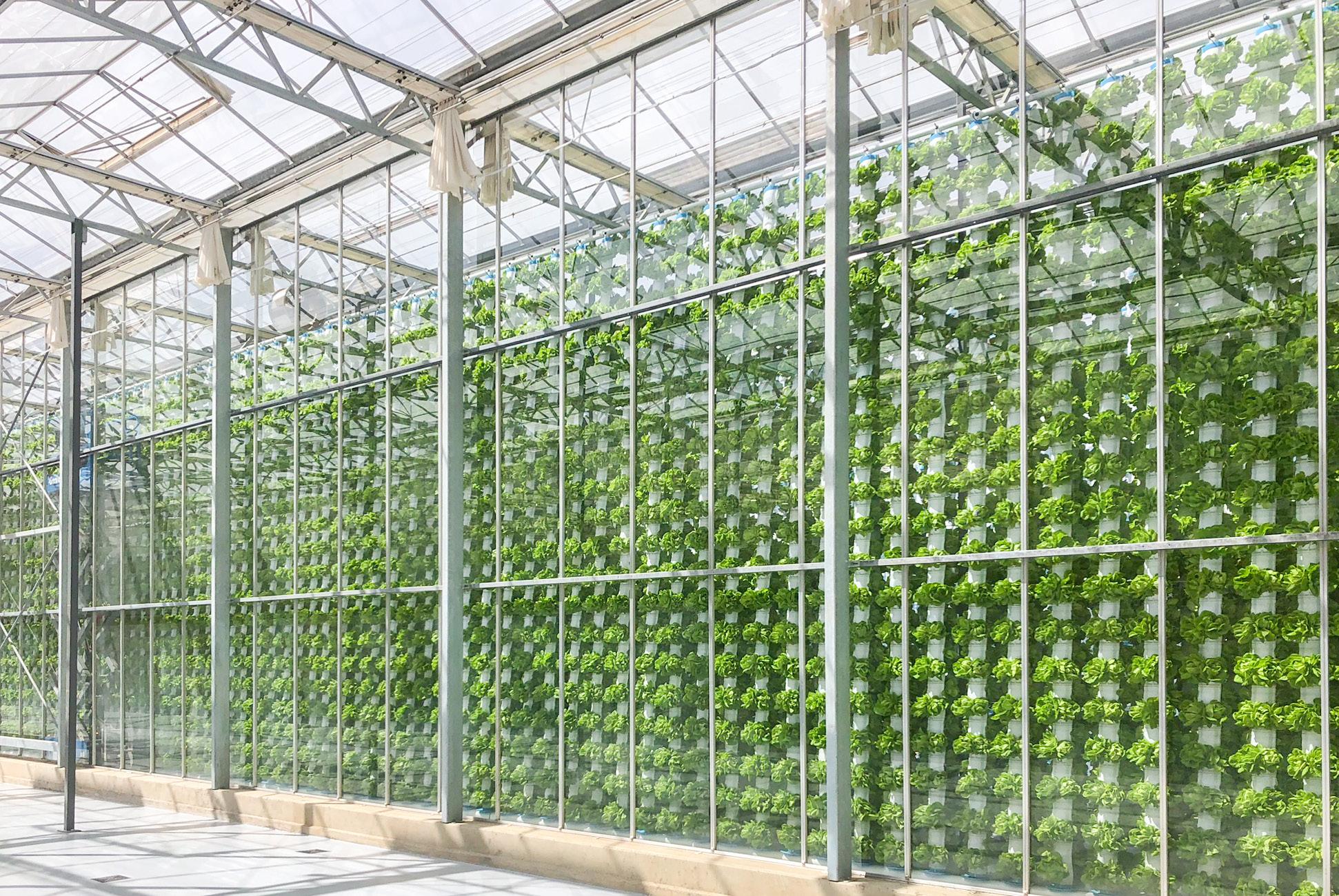
Together with CAN-Agri, Dürr developed a solution that not only leverages existing potential, such as sunlight, but also conserves resources across the board through efficient plant manufacturing, patented technologies, as well as digitalization.

The mechanical and plant engineering company Dürr is entering a new industry with its EcoY turnkey vertical farm. The company is combining its expertise in plant engineering –particularly in the demanding field of ventilation and energy-efficient climate control
technology for paint shops – with the know-how of Clean Air Nurseries Agri Global (CAN-Agri) – a specialist in innovative farming technologies. EcoY, a resource-saving turnkey system solution, leverages natural sunlight & utilizes up to 95 percent less water than conventional cultivation methods. The overall concept of the plant, developed
using patented technology, is revolutionizing vertical farming.
A growing global population, climate change with increasingly extreme weather conditions, and the resulting loss of agricultural land are driving the development of new highyield cultivation methods that prioritize sustainability and resource efficiency. Together with its partner and subcontractor CANAgri, Dürr has developed the turnkey vertical farm EcoY – an innovative controlled environment farming solution that delivers high yields in a compact footprint. It provides access to fresh food, especially lettuce and other leafy greens even in metropolitan areas of regions where vegetation is otherwise not viable. This can be achieved with high quality in a pesticide-free environment and, above all, with short transportation routes. EcoY focuses on sustainable cultivation, lowering production costs, and reducing both energy and water consumption, while using cutting-edge manufacturing techniques.
EcoY – vertical farming on a new level
Controlled Environment Agriculture (CEA) refers to the modification of the natural environment to boost crop yield or extend the growing season. CEA systems are typically housed in enclosed structures such as greenhouses or buildings, where environmental factors like air, temperature,
light, water, humidity, carbon dioxide, and plant nutrients are controlled. In most vertical farming systems, the crops are grown in horizontal layers stacked one on top of the other with no access to daylight. These setups demand massive amounts of energy for artificial lighting, mechanical ventilation, and climate control – costs that cannot be offset by raising prices for low-margin produce.
Dürr has reimagined this system using its engineering expertise.
“With our EcoY solution, we’re taking a different approach,” explains Michael Broek, Company Chairman at Dürr Africa.
“Our objective was to develop a system that delivers maximum yield with minimum energy consumption. It’s essentially a hybrid hydroponic solution, independent of external climatic conditions. The system can even operate in extreme environments such as deserts or regions with extreme cold.” Together with CAN-Agri, Dürr developed a solution that harnesses natural resources like sunlight for vertical plant growth in a greenhouse, while conserving energy and water through efficient manufacturing, patented technologies, and digitalization. This greatly reduces operating costs while ensuring consistent quality and yield per square meter.
For more information, visit www.durr.com
Business owners in greenhouse, vertical farm and growth chamber cultivation of plants, this is a great opportunity for you!
With NPO Veggies Cultivation innovative temperature and lighting models, you can say goodbye to costly plant protection measures. Now, you can enjoy the convenience of cultivating healthy vegetables indoors. By maintaining optimal growing conditions, our models ensure your plants thrive, resulting in bountiful and nutritious harvests.
THE GLOBAL VEGETABLE CALCIUM DEFICIENCY PROBLEM
Many vegetables develop unique deficiency symptoms; for example, black heart in celery, tipburn in lettuce, tipburn in chervil, tipburn of Chinese cabbage and blossom end rot in tomato. Harvests with these deficiencies cannot be sold, causing farmers globally to lose Billions of Euros on an annual basis.
SOLUTION
We have developed an Innovative Knowledge Models
(temperature and lighting models) for greenhouse farmers, which create the optimal conditions specifically for lettuce, cabbage and tomato’s which improve the Ca uptake so that instead of only 80%, close to 100% of the harvest can be sold. Our Innovative Knowledge Models is also applicable to other vegetables not mentioned above with or without similar deficiencies. This model makes plants stronger and storability better. Less Ca deficiency related disorders on plants. Plants suffer less under pests and diseases, because they have stronger skin. There is up to 20% yield increase by diminishing Ca deficiency disorders on vegetables. Pesticide use is minimal or absent. Optimal growth conditions for major factors are given.
Margit Olle has proved the scientific foundation and effectiveness of the Knowledge Lighting Model utilized in the greenhouse Lighting Model. This model is proved from one end based on Far-red light

spectrum, which has been developed with two positive assumptions in mind to yield positive results in Ca uptake. The model represents an innovative, mathematical, and scientifically validated system for optimizing greenhouse lighting. Margit Olle affirms that there is an essential, confidential scientific component behind the operation of the Knowledge Lighting Model. Without this foundational element, the model would not function as intended.
Lighting model is ready for sale, but temperature model needs a little R&D.
For more information, visit https://www.npoveggiescultivation.com/ indoor-plant-models







Since its inception in 1992, Nico Orgo Manures has remained at the forefront of the organic agriculture revolution, setting new benchmarks in sustainability, innovation, and crop productivity. Headquartered in India and catering to markets across the globe, the company has been instrumental in introducing environmentally responsible agricultural solutions that respond to the growing concerns of soil health, environmental degradation, and food safety.

research and scientific development. Under the guidance of the late Dr. Chakravarthy, a distinguished principal scientist from Anand Agricultural University, the company established its own R&D facility and scientific laboratory, ensuring rigorous product development, testing, and innovation,” says Dushyant Laijawala, Director of Nico Orgo Manures, in an exclusive interview with Gulf Agriculture magazine’s Managing Editor, M. Matt.
“Nico Orgo’s success is deeply rooted in its commitment to

“The research farm plays a critical role in validating the efficacy and safety of all formulations under real-world agricultural conditions,” he adds. “We don’t just develop products—we back them with science and field performance data.”
Nico Orgo manufactures a comprehensive range of certified organic agricultural inputs tailored for:
• Sustainable agriculture and horticulture
• Landscapes and turf management
• Gardens, forestry, and sports amenities
“All our products are biodegradable, eco-friendly, and compatible with Integrated Crop Management (ICM) systems,” notes Laijawala. “Our mission is to help farmers transition to regenerative practices without compromising yields or profitability.”
Core Product Categories
Include
1. Nitrification Inhibitors
• N-Guard, a certified organic inhibitor, enhances nitrogen efficiency, curtails volatilization and leaching, and improves yields. It is SGS-tested and ideal for urea-based systems.
2. Lyophilised Biofertilisers
• Freeze-dried biofertilisers for Nitrogen fixation, Phosphate solubilisation, Potash mobilisation, and micronutrients such as S, Zn, and Fe. Offered individually or in blends (BioAll, BioMicro).
3. Soil Fertility and Conditioning Products
• Custom-blended organic fertilisers, neem-based formulations, and microbially enriched options for nematode and fungal control.
4. Organic NPKs
• With over 70% organic matter content, these formulations can be customised to meet specific crop nutrient needs.
5. Plant Growth Promoters & Bio-Stimulants
• Available in both liquid and granular forms, designed to improve physiological activity, plant metabolism, and crop resilience.
6. Organic Pest Management Solutions
• Certified organic botanical pesticides, fungicides, and nematicides—including neembased biocontrols and advanced freeze-dried biologicals like Trichoderma spp., Paecilomyces, and Pseudomonas.
Nico Orgo’s impact transcends borders, with products exported to over 15 countries, including China, Japan, Kenya, Zimbabwe, Malawi, South Africa, UK, Germany, Italy, France, USA, Costa Rica, Tahiti
“Our presence in these countries demonstrates the global demand for sustainable inputs,” explains Laijawala. “We’ve proven that organic solutions can compete with chemical inputs not just environmentally, but commercially too.”
The company also maintains a strong presence at international agricultural fairs, conferences, and seminars, continually expanding its global footprint and engaging with stakeholders worldwide.
Commitment to quality and sustainability is reflected in Nico Orgo’s internationally recognized certifications:
• EcoCert – Europe
• OMRI – USA
• OF&G – UK

• ISO 9001:2008 – Quality Management System
“These certifications affirm our products meet the strictest global standards,” says Laijawala. “They also reflect our dedication to continuous improvement and transparency in everything we do.”
As global agriculture shifts toward sustainability and climate resilience, Nico Orgo Manures continues to lead the charge with its innovationdriven, eco-conscious product portfolio. The company’s unwavering dedication to organic integrity, farmer productivity, and environmental stewardship makes it a valued partner in the mission for a greener tomorrow.
“We believe the future of farming is rooted in biology, not chemistry,” concludes Laijawala. “Our aim is to empower farmers worldwide to grow more responsibly—and more profitably.”

For more information or a detailed product catalogue, contact: Kartik Laijawala, Nico Orgo Manures nicoorgo@neemnico.com, kartik@orgoneem.com, www.neemnico.com

Nowadays it is relatively common to hear the term VPD, especially among newer growers. But what is VPD after all? What does it measure?
First, let’s clarify the terminology. There are two meanings for VPD, and I have seen a lot of confusion between them.
We have VPD as vapor pressure deficit and VPD as vapor pressure difference. They measure different quantities, although both use the same unit kPa (kilopascal). The first refers to the potential for water to evaporate into the atmosphere. The second measures the difference in pressure between the substomatal cavity and the surrounding air in plants. For horticulture, it is the second meaning -vapor pressure difference - that really matters.
The interior of the leaf (in the
intercellular spaces near the stomata) is almost at 100% relative humidity, meaning it is at saturated vapor pressure. If the external air is less humid (i.e, has a lower vapor pressure), a vapor pressure gradient is created between the inside of the leaf and the surrounding air. This gradient causes water vapor to diffuse outwards — from high pressure (inside the leaf) to low pressure (in the air). This is the process of evaporation through the stomata, known as transpiration.
The Vapor pressure deficit is calculated using a formula that determines the pressure differential inside and outside the stoma.
Suppose the leaf temperature in a medicinal crop is 25ºC. We
can assume that inside the stomatal cavity, the RH is close to 100% so the vapor pressure at 25º is 3.17 kPa. This gives us the vapor pressure inside the stoma. Now, let's imagine the air in the greenhouse at 30ºC and 60% relative humidity; under these conditions, the vapor pressure is 2.55 kPa.
The vapour pressure difference = saturated vapor inside the leaf –actual vapor pressure of the greenhouse air.
In our example: 3.17 kPa2.55 kPa = 0.62 kPa
This means that there is a positive pressure from the inside to the outside of the leaf. But does a higher value always mean the plant transpires more? Not necessarily.
Up to a certain value -which may vary depending on the crop’s phenological stage or species—transpiration increases with VPD. Beyond that point, however, the opposite effect occurs, and the transpiration potential drops.
Vapor pressure chart of the air according to temperature and RH (AI generated)
allowing plants to absorb nutrients more quickly.
• Stress: Extreme VPD levels can stress plants. Very high VPD causes excessive transpiration, while very low VPD limits water and nutrient movement.
• Assimilation: Proper VPD management helps direct sugars to the right plant parts at the right time.
Why is it important to know the Plant’s Transpiration Performance?
VPD provides information on the crop's transpiration rate, that is, the speed at which water moves from the roots, through the stem, and out through the stomata. This is not just a process of hydration or cooling; it also involves the transport of nutrients taken up from the substrate or irrigation water.
A key example is calcium transport. Plants only transport calcium and other nutrients efficiently while evaporating. Calcium is crucial for building the plants’ systemic resistance and other growing processes.
In summary, the leaf transpiration rate is determined by the vapor pressure difference between the air and the stomata. This, in turn, determines nutrient transport and plant growth.
Temperature and humidity set the VPD because the amount of water air can hold depends on temperature: warmer air holds more water. Thus, the vapor pressure difference drives evaporation in plants when the stomata are open.
To summary: inside the stoma, it is nearly saturated (100% RH). If the air is also at 100% RH, there is no pressure difference and thus no evaporation. If the air’s RH is lower than 100%, there is enough pressure difference for evaporation. When the leaf releases water, it enters the air
as vapor, and the plant replenishes it from the roots. This process can be measured and manipulated to optimize plant development by irrigating at the right time and/or modifying the greenhouse environment.
VPD values directly influence several crop processes:
• Transpiration: Higher VPD increases the transpiration rate, so crops need to rehydrate more frequently, but growth may be faster.
• Stomatal Opening: When VPD rises above a certain point, plants close their stomata to prevent excessive water loss and maintain hydration.
• CO2 absorption: As VPD increases and stomata close, CO2 absorption decreases, leading to reduced photosynthesis (for C3 plants).
• Nutrient absorption: High VPD means greater transpiration up to a point,
VPD levels by crop stage and solar radiation.
Crops in early stages require less water and nutrients, but as they develop, these needs change. VPD should increase progressively with crop development. Within each stage, VPD can be maintained within certain limits, depending on solar radiation:
• Germination stage (until start of vegetative phase):
0.4–0.8 kPa
• Cuttings and clones: 0.4–0.8 kPa
• End of vegetation to start of the flowering phase: 0.8–1.2 kPa
• Mid- to end of flowering: 1.2–1.6 kPa
There are many tables on the internet showing the recommended VPD values based on the growing phase: Many tables online show recommended VPD values by growth phase. These values can vary by crop stage or species. Remember, VPD is a guideline for evapotranspiration, but many other factors affect crop success.

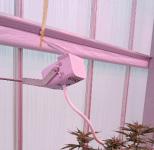
How to change the VPD value in my plants
Depending on the plant's needs, stage, and radiation level, VPD can be adjusted by changing the temperature and humidity.
• To increase VPD: Raise temperature (heating, closing windows/screens) or lower humidity (dehumidifiers, ventilation management, HVAC, etc.).
• To decrease VPD: Lower temperature or increase humidity (open windows, use humidifiers).
Air movement also increases evaporation by removing vapor from the leaf surface, helping maintain the pressure differential and contributing convective energy. This is especially important at night to ensure ongoing nutrient transport
To manage equipment and achieve VPD targets, it is crucial to measure crop temperature. Devices range from manual infrared thermometers to advanced thermographic cameras that monitor temperatures at multiple points

and communicate with cloud platforms that can communicate with your climate controller. Infrared technology works by capturing the infrared radiation emitted by the crop, allowing you to measure temperature without direct contact. Some examples of devices are:
• Manual infrared thermometers: Allow spotchecks but are inefficient for large-scale monitoring.
• Data logger infrared thermometers: Record and store crop temperature data for later analysis or cloud upload.
• Plant temperature sensors: Measure crop or fruit temperature using infrared principles. These sensors can detect crop stress and condensation risks early. The sensor provide notification when any deviations occur between the crop temperature and the greenhouse temperature
• Thermographic cameras: Capture infrared images (thermograms) showing temperature differences across the crop. These cameras provide real-time monitoring and can

integrate with climate control systems for automated adjustments. By measuring both crop and greenhouse temperatures at multiple locations, growers gain insight into vertical and spatial temperature differences. If the climate computer is connected to the platform, data from thermographic cameras can be combined for automated environmental management, such as receiving alerts if fruit or flowers drop below dew point.
In conclusion, understanding and managing vapor pressure difference (VPD) represents a transformative advance in protected‐crop cultivation. By precisely balancing temperature and humidity to maintain optimal VPD levels, growers can unlock more efficient transpiration, enhanced nutrient uptake—especially calcium transport—and stronger, more resilient plants. With accessible tools ranging from infrared thermometers to integrated climate‐control systems, this approach empowers even small‐scale producers to fine‐tune their greenhouse environment, driving higher yields and superior crop quality. Embracing VPD management is not just a technical upgrade; it’s a strategic leap forward for modern horticulture.
Case IH Axial-Flow® combines can now be equipped with new G500V VariCut variable knife grain headers, with features that enhance performance and ease operator workload. The seven G500V models span 6.1-12.5m (20-41ft) working widths, each with a knife that can be moved across a 575mm fore/aft range to ensure consistent crop flow in all crop types and conditions. Wider models feature new hydraulicallyoperated gauge wheels that can be switched from the cab between transport and field mode, making it unnecessary to manually raise the wheels before loading the header on its trailer. (De)coupling time is minimized thanks to connections grouped on the left-hand side only, and a single PTO.
New VariCut headers feature inline knife drive, with fully-linear output shaft motion, for smooth operation with minimal vibration. The belt drive has been replaced by gearboxes and a telescopic PTO, reducing overall driveline maintenance requirements and easing the operator workload to maximise comfort. The 10.5m/35ft and 12.5m/41ft models feature 100% synchronized dual knife drive,

where the right-hand knife is driven via the intake auger, an upgrade which helps further minimize vibration. A knife speed increase from 660rpm to 735rpm enables higher forward speeds without compromising cutting performance, maximising capacity.
The auger stripper setting can now be altered from the rear of the header, encouraging operators to regularly check for correct adjustment, and to ensure even and consistent crop flow. The new auger height adjustment assembly provides two pre-set positions: a high one primarily for rapeseed/canola and a low one for small grains. This requires simply loosening four bolts and rotating the overcentre cam system, reducing adjustment time on single-span augers by 25%.
A new click-on side knife with aluminium cast frame is one-third lighter than the outgoing design. Over-centre
locking retains the side knife or divider assemblies, cutting knife removal time by 50%, while lighter knives mean easier handling.
“The new G500V VariCut variable knife grain headers are designed specifically to help customers and operators of Case IH Axial-Flow 160 and 260 series combines, and the new AF series combines, to get the best performance from their machines,” explains Andreas Saile, Case IH Crop Harvesting Business Manager for Europe.
“Improvements from the gauge wheels to the couplings, plus the lighter click-on sideknife, mean quicker set-up, enabling operators to get going faster in the field. With the main knife speed increase improving throughput, and the new knife drive cutting maintenance time, these upgrades collectively allow users to exploit the full potential of their combines.”
For more information, visit www.caseih.com
"Government and regulatory bodies, such as the Ministry of Climate Change and Environment (MOCCAE), the UAE Food Security Office, and Abu Dhabi Agriculture and Food Safety Authority (ADAFSA), are key stakeholders who will find núaFEEDs' solution highly beneficial."
The UAE's commitment to food security and sustainability initiatives is set to receive a significant boost with the imminent entry of núaFEEDs, an innovative Australian agri-tech company. Having completed its registration in the UAE, núaFEEDs is poised to launch a facility that will convert surplus bread waste into high-quality, nutritious, sustainable livestock feed— addressing one of the region’s biggest challenges: Food waste. The company chose the UAE as the launchpad for its international expansion, drawn by the country’s bold sustainability vision, commitment to food security, and forward-thinking circular economy initiatives.
NúaFEEDs arrives in the UAE with a proven track record spanning over 25 years from its family-operated facility in Western Australia. The company, led by Chava
and Eric Berrill, has pioneered a unique solution that addresses three critical challenges across the supply chain: the rising & unpredictable cost of livestock feed, the increasing volume of food waste, and the cost of disposing of waste.
The benefits of núaFEEDs' entry into the UAE market are multifaceted for both industry and government. For those with grain-based food waste, such as major retail chains, food manufacturers, and bakeries, partnering with núaFEEDs offers lower disposal costs for food waste, streamlined collection processes, and tangible accredited reductions in greenhouse gas emissions and water consumption. Each tonne of bread diverted from landfill avoids more than 500 kg of equivalent CO2 and saves 13 cubic meters of water embedded in grain production. This

aligns directly with the UAE government's mandates and climate goals, enhancing the sustainability credentials of participating businesses.
For livestock farm owners and feed buyers, núaFEEDs offers a stable, lower-cost, and high-nutrition feed alternative. With traditional feed commodity prices subject to significant annual fluctuations, núaFEEDs' fixed-price, locally sourced solution will provide muchneeded stability and reduce dependency on imports, thereby strengthening the UAE's food security. The company's commitment to rigorous biosecurity standards, forged under Australia's strict biosecurity regulations, further assures top-tier quality and safety. Government and regulatory bodies, such as the Ministry of Climate Change and Environment (MOCCAE), the UAE Food Security Office, and Abu Dhabi Agriculture and Food Safety Authority (ADAFSA), are key stakeholders who will find núaFEEDs' solution highly beneficial. The project directly supports the National Food Security Strategy 2051 by reducing reliance on imports, promoting local feed alternatives, and contributing to waste reduction goals.
The UAE, with its arid climate and limited arable

land, relies heavily on imported feed ingredients for its approximately 4.8 million head of livestock and 44 poultry farms. Meanwhile, in the GCC region alone, 18 million tonnes of imported food end up in landfills (approximately 19% of that comes from cereals and grains), wasting valuable nutrients and contributing significantly to greenhouse gas emissions.
núaFEEDs' innovative approach focuses on isolating grain-based waste, and transforming it into livestock feed. This process not only diverts waste from landfills but also retains the nutritional quality of the bread, creating a product that can outperform traditional grains like barley in terms of protein and energy content – at a competitive cost to animal feed consuming industries
núaFEEDs' entry into the

UAE market represents a tangible step towards greater food security and a more circular economy –where valuable resources are kept within the food chain, food waste and carbon emissions are reduced, and local food production is enhanced. The
company's long-standing expertise and innovative approach are set to make a significant contribution to the UAE's sustainability vision.
For more information, visit https://nuafeeds.com
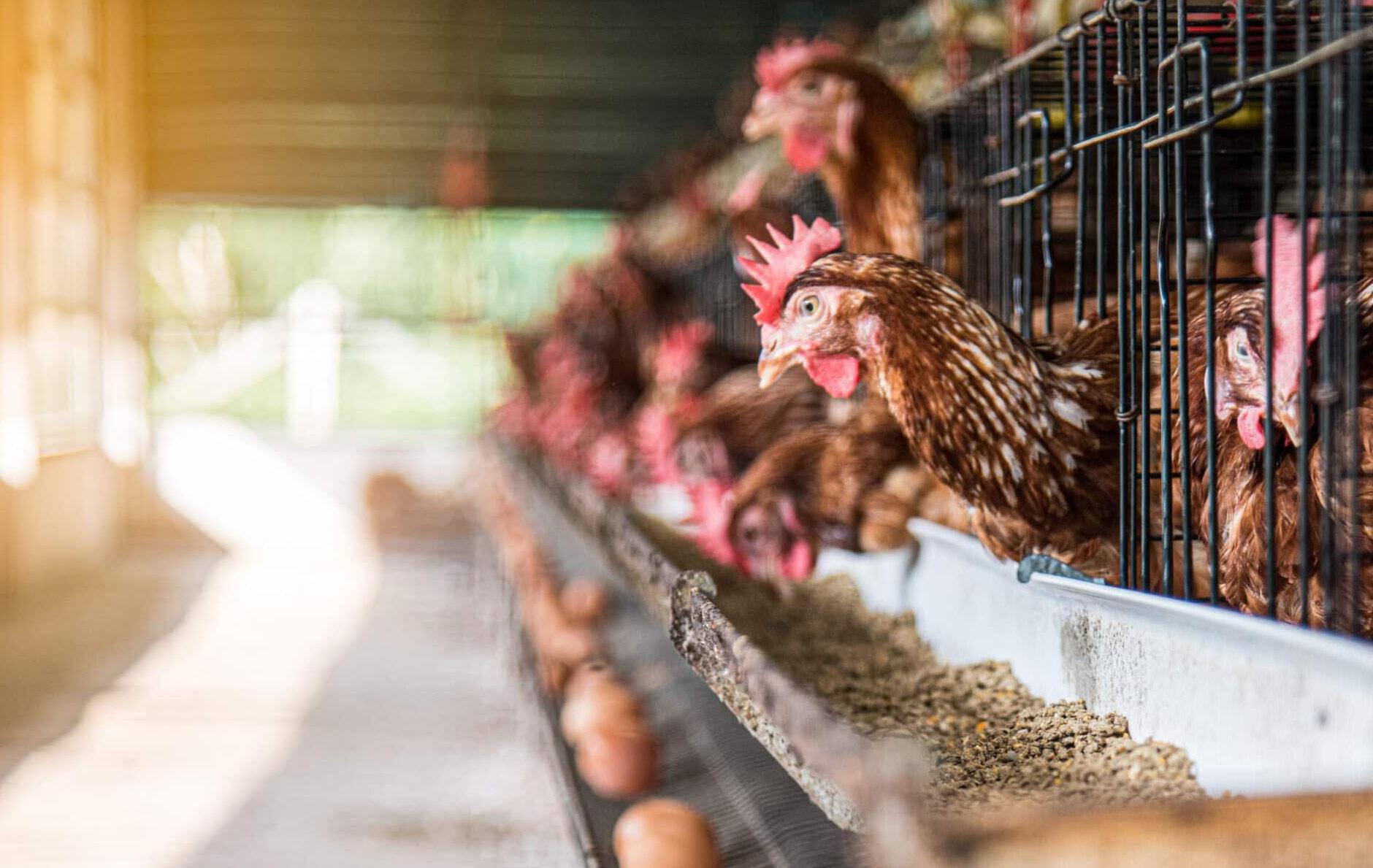
As part of the natural production cycle, performance declines over time. Keeping hens healthy and productive for longer is not only beneficial for animal welfare – it also makes sound economic sense.
Declining egg production, reduced shell stability and rising disease pressure often lead to an earlier culling than would actually be necessary. This is neither profitable nor sustainable, especially in light of rising pullet and rearing costs. The better option: comprehensive support that helps maintain laying performance well beyond peak.
A targeted feeding strategy supports digestion, metabolism and the immune system –enabling hens to stay productive for longer. At the same time, extending the productive life of laying hens helps build trust in a more
sustainable and animalfriendly poultry industry.
The power of plants –proven and practical
A highly effective way to unlock the full potential of older hens is Anta®Phyt, a plant-based feed additive made from hops and liquorice extracts. This tried-and-tested combination supports gut health, performance and resilience.
Anta®Phyt positively influences the gut microbiome. The antimicrobial properties of hops improve resistance to a range of gram-positive pathogens. At the same time, it promotes a larger and more resilient intestinal surface –which leads to better feed conversion and improved egg quality. Why is this important? A larger gut surface increases the absorption of minerals such as calcium. More calcium = stronger egg shells.
Another key benefit comes from the immune-modulating compounds in liquorice. These help hens manage inflammation and infections more effectively. Thanks to this broad range of action, Anta®Phyt naturally promotes productivity and animal welfare.
Lasting benefits for laying hens – and for your business
• Anta®Phyt improves egg quality and laying performance in older hens
• Anta®Phyt increases survival and extends the production cycle
Healthy, productive hens are no coincidence – they’re the result of the right nutritional strategy. Anta®Phyt supports older birds naturally, helping them stay fit and efficient for longer.
For more information, visit www.dr-eckel.de
